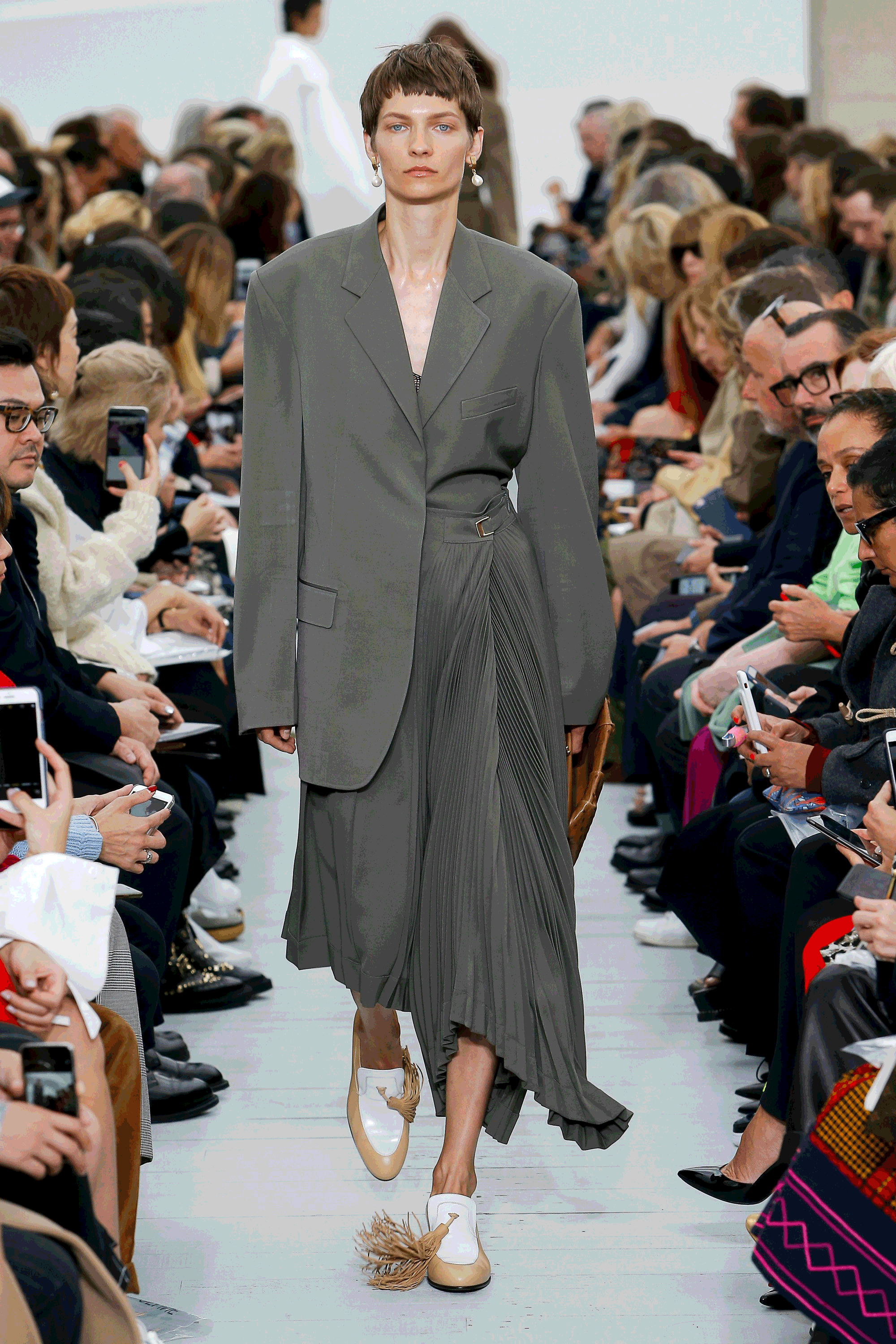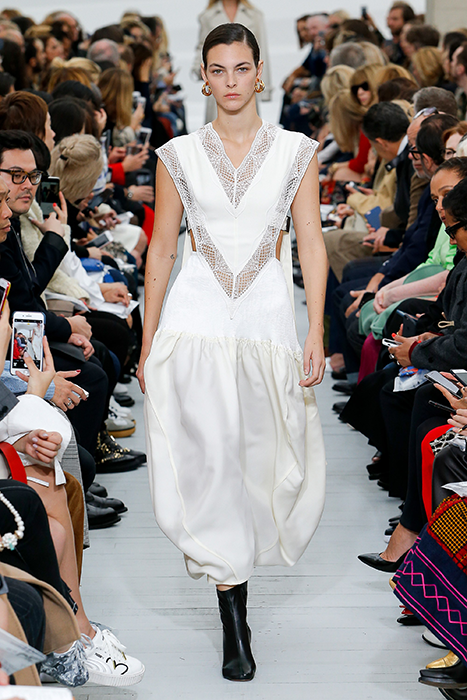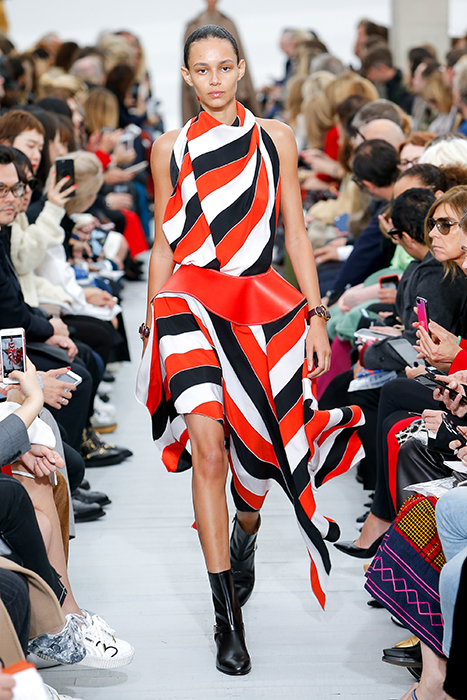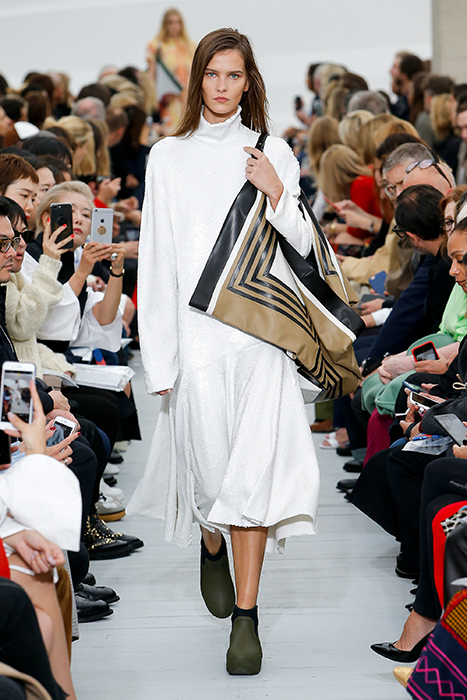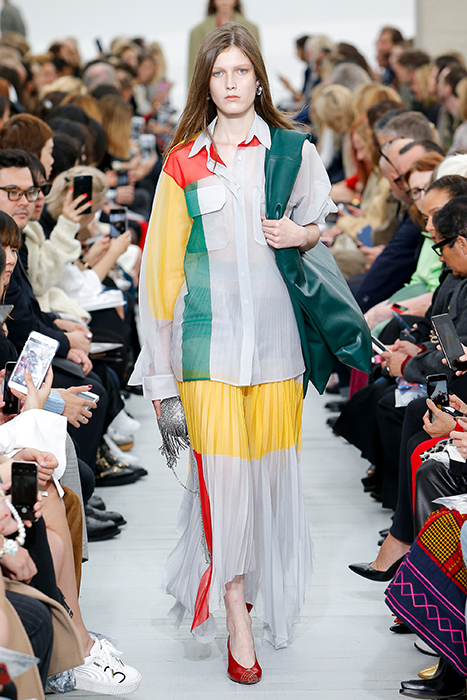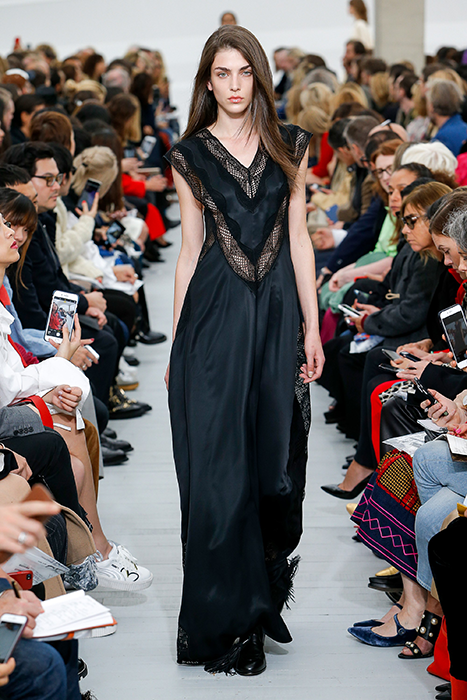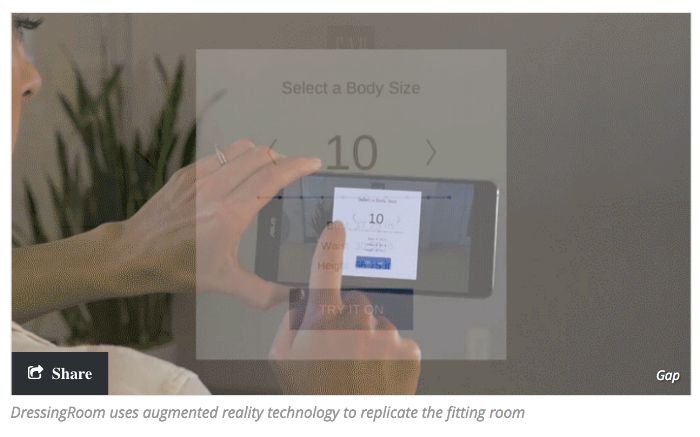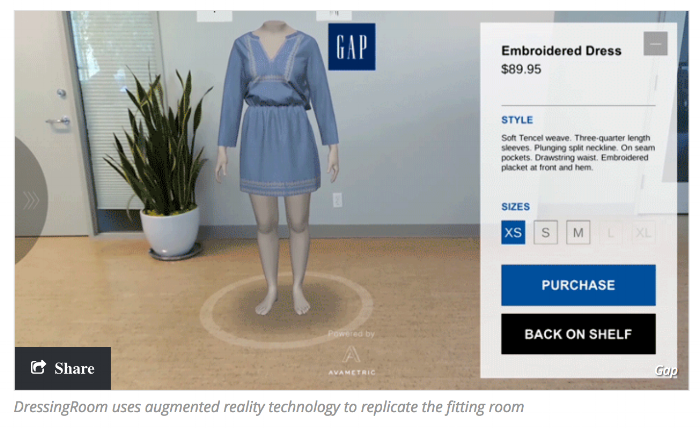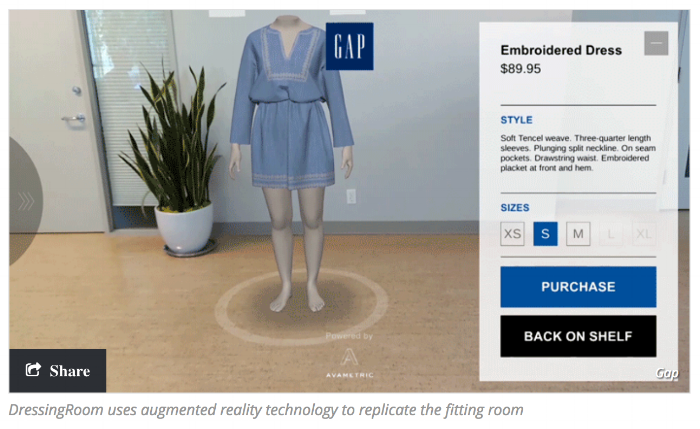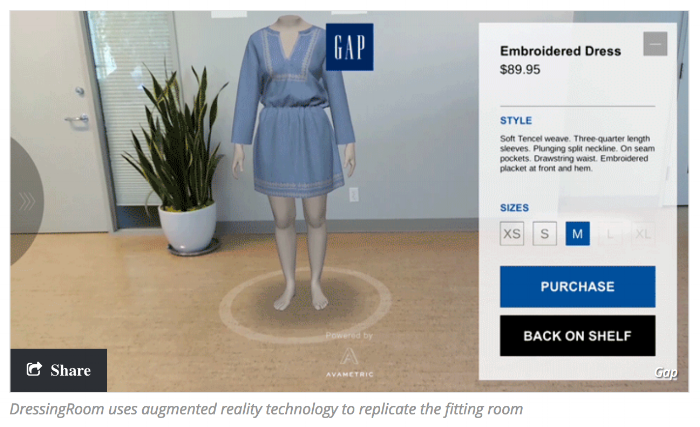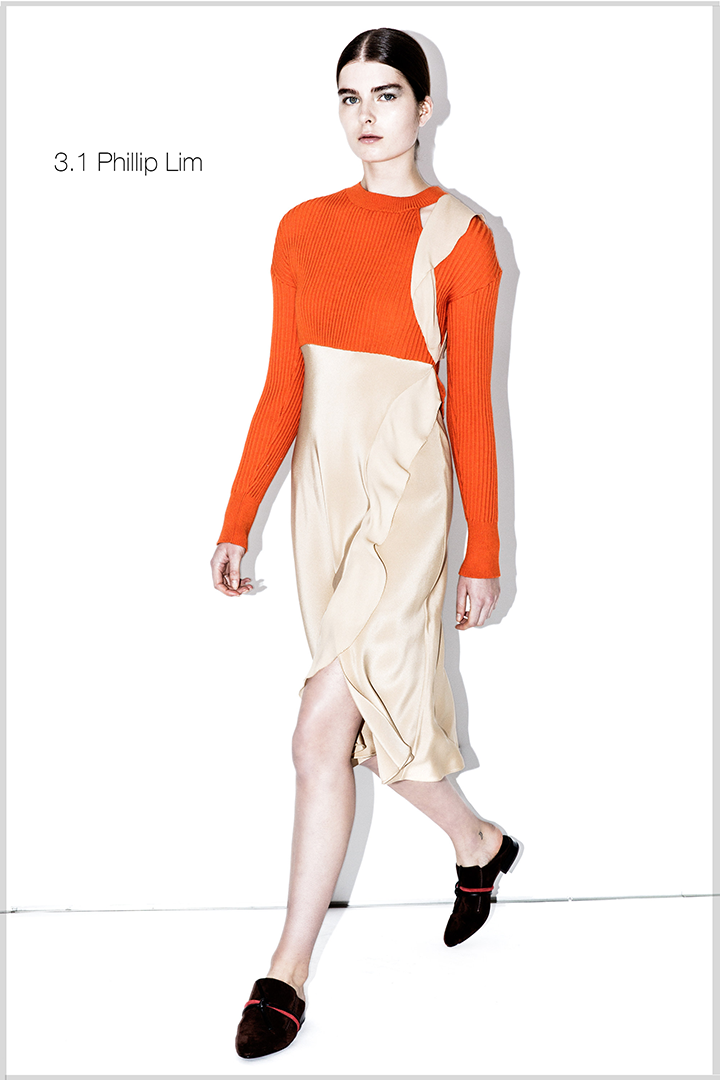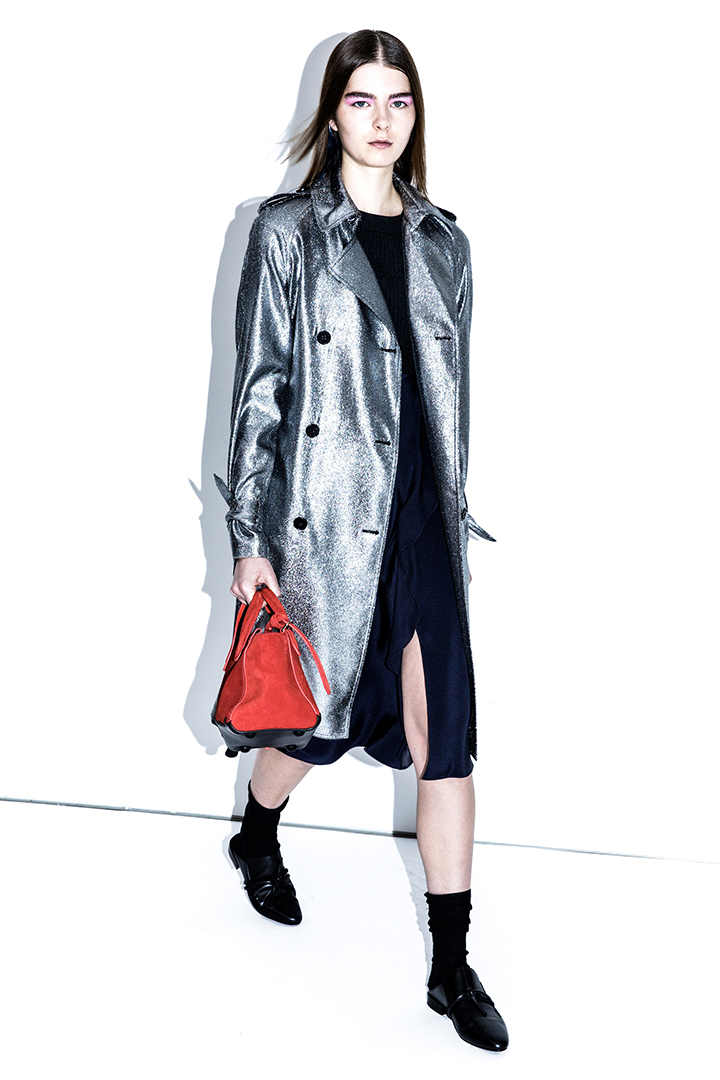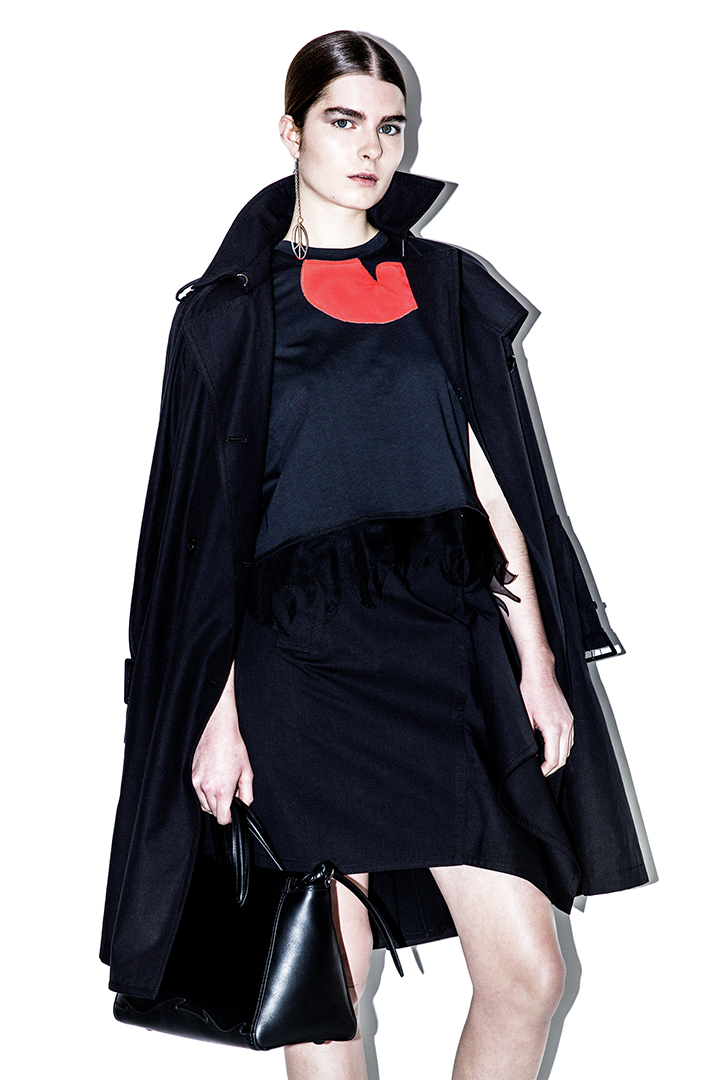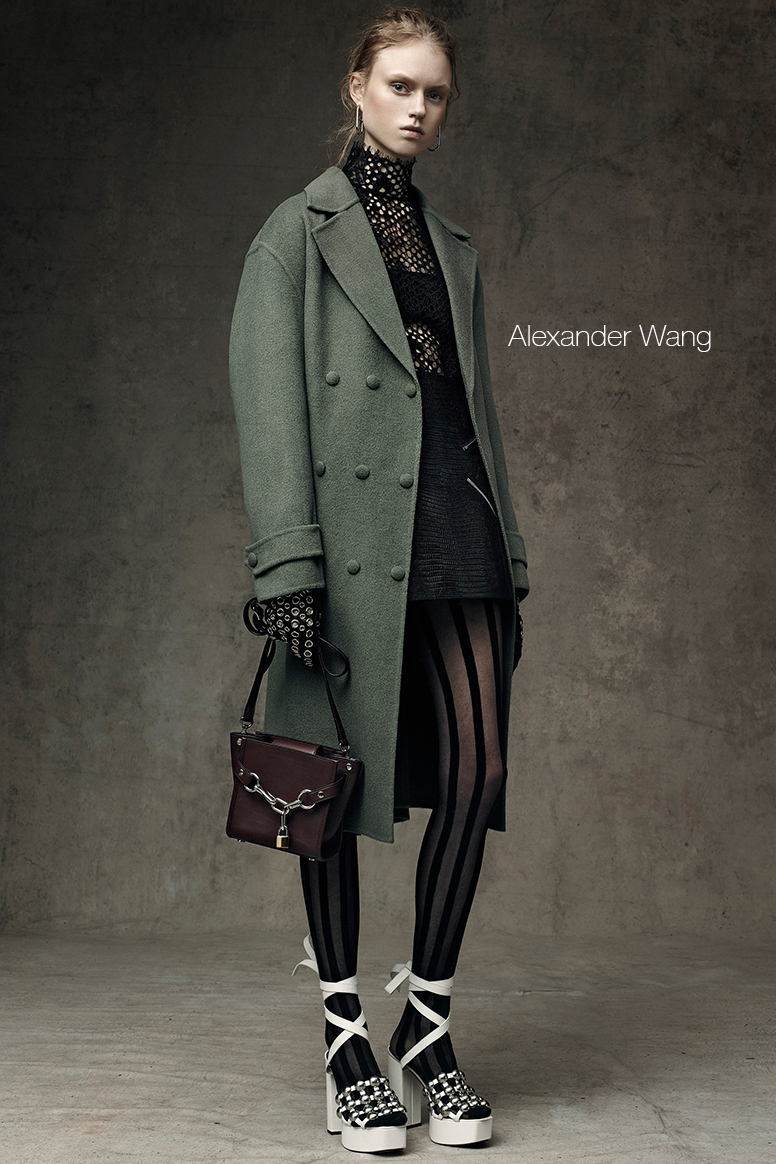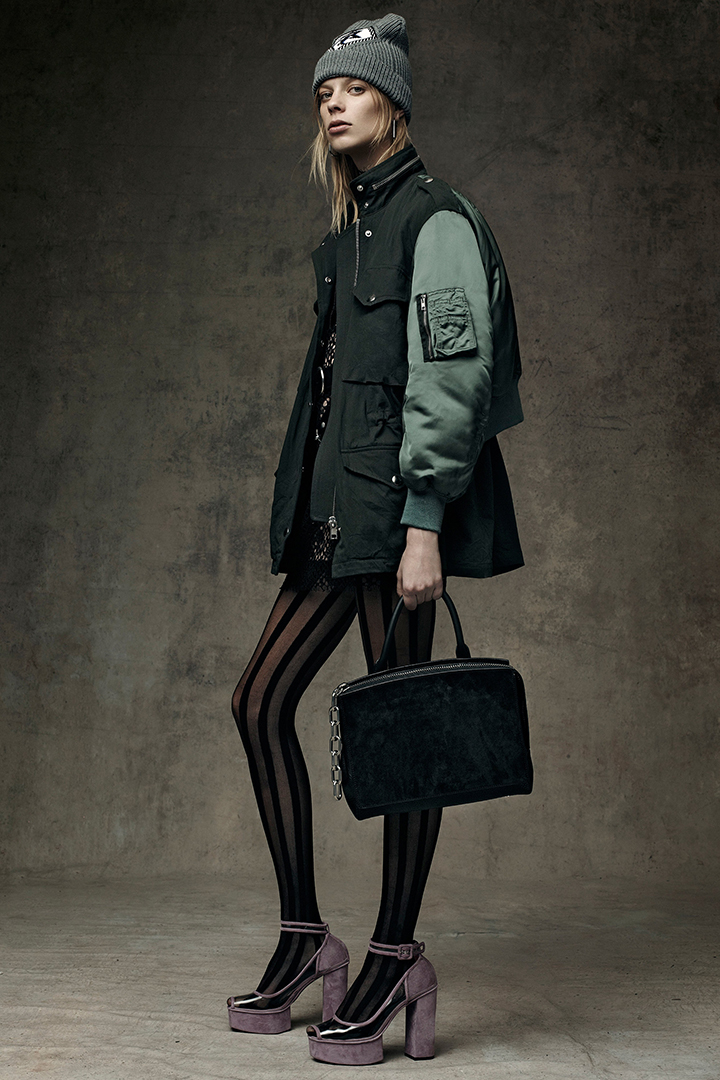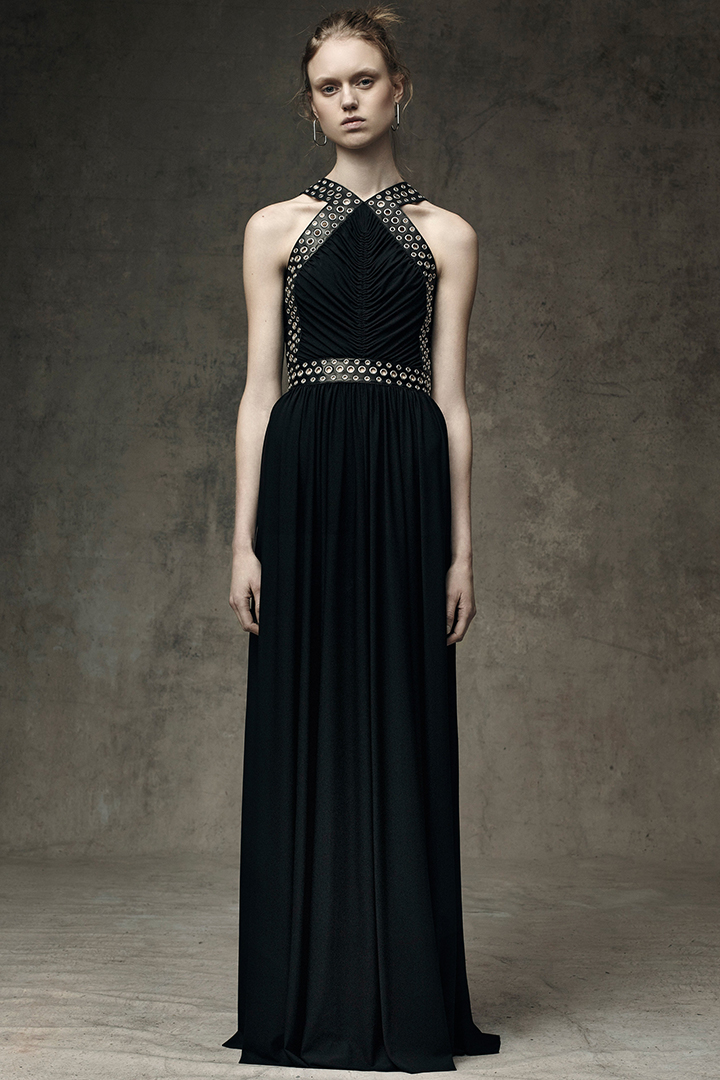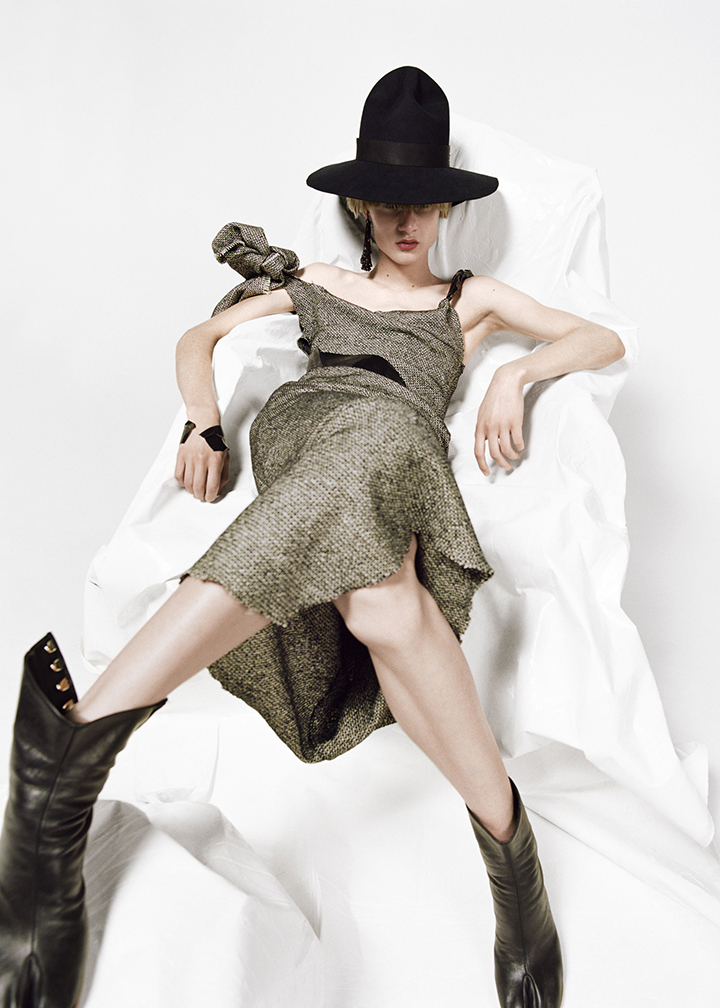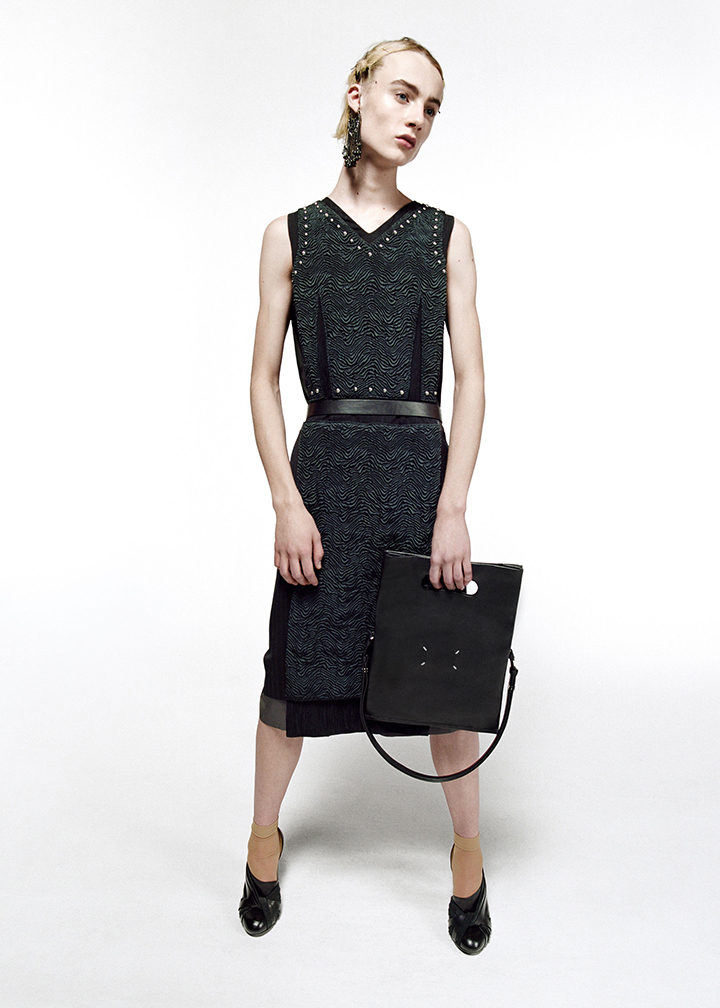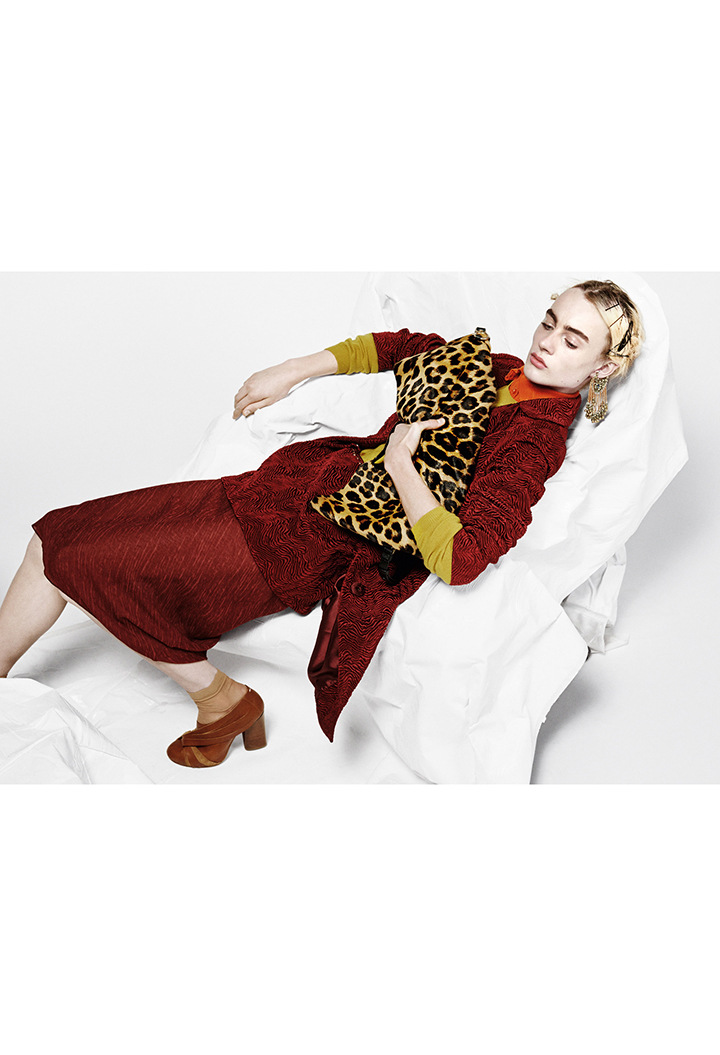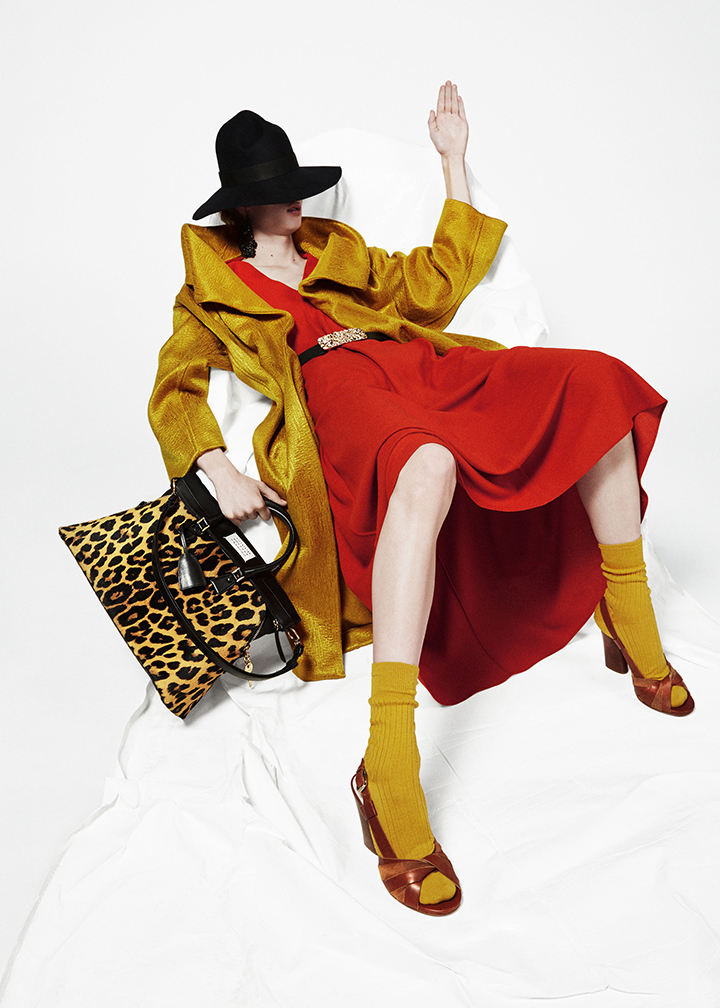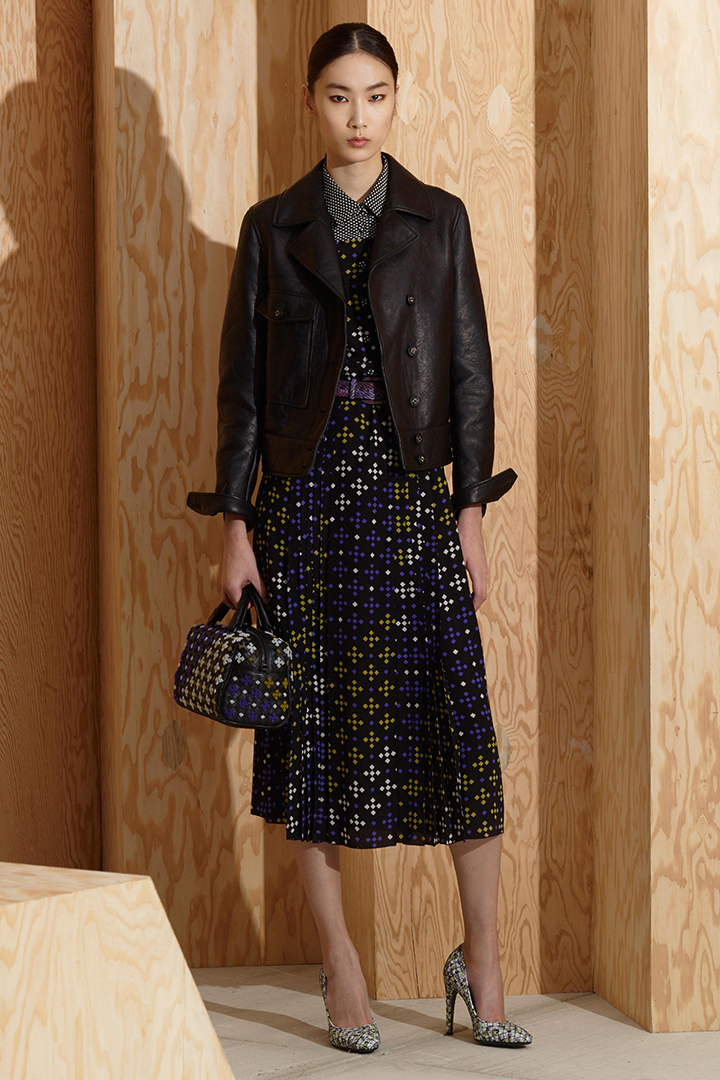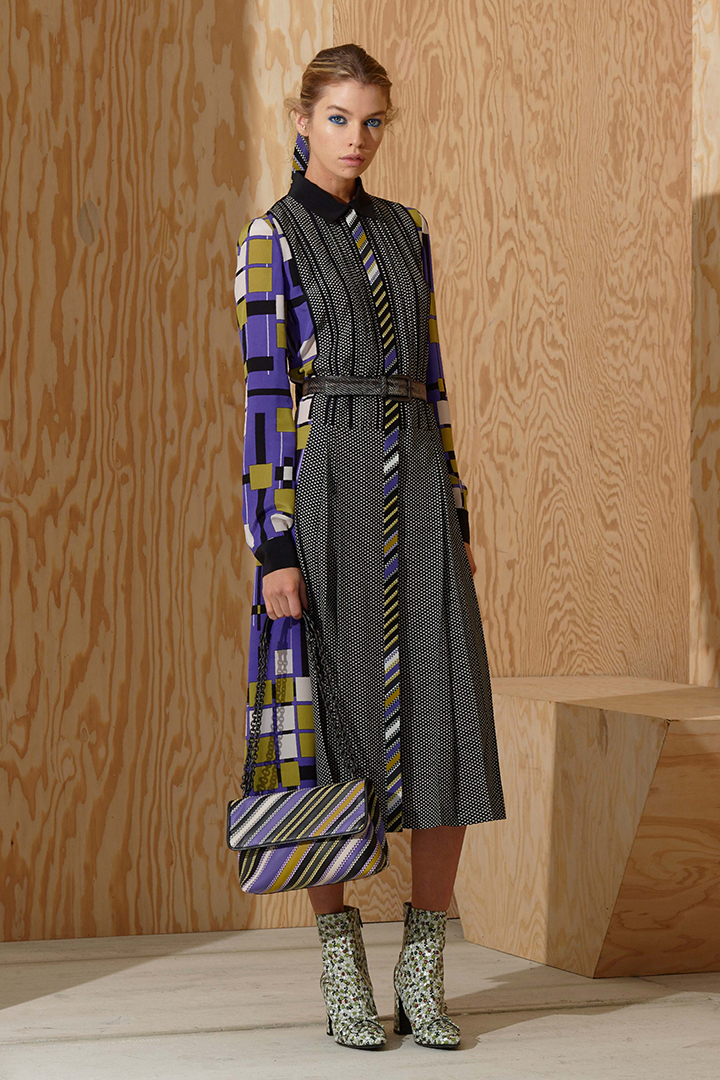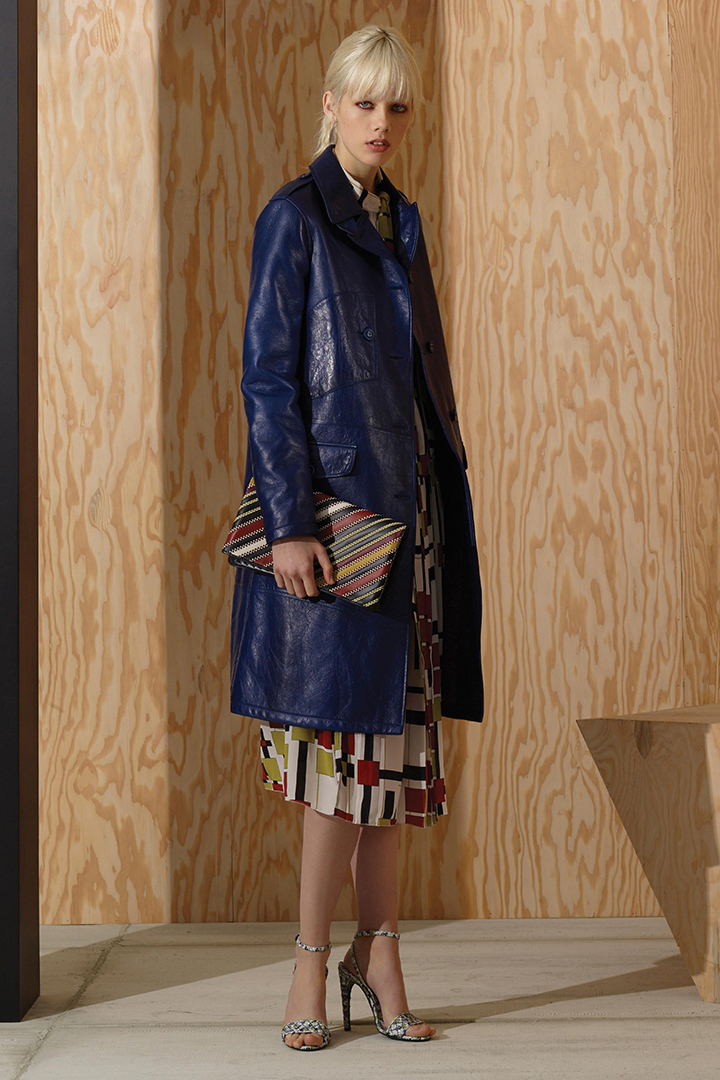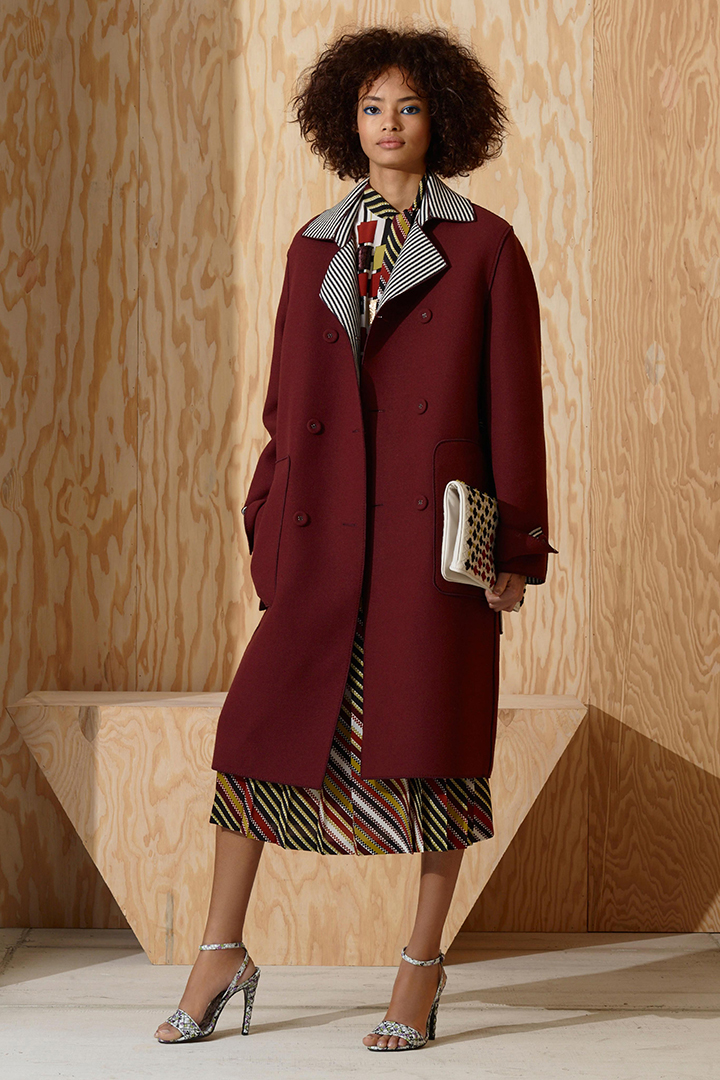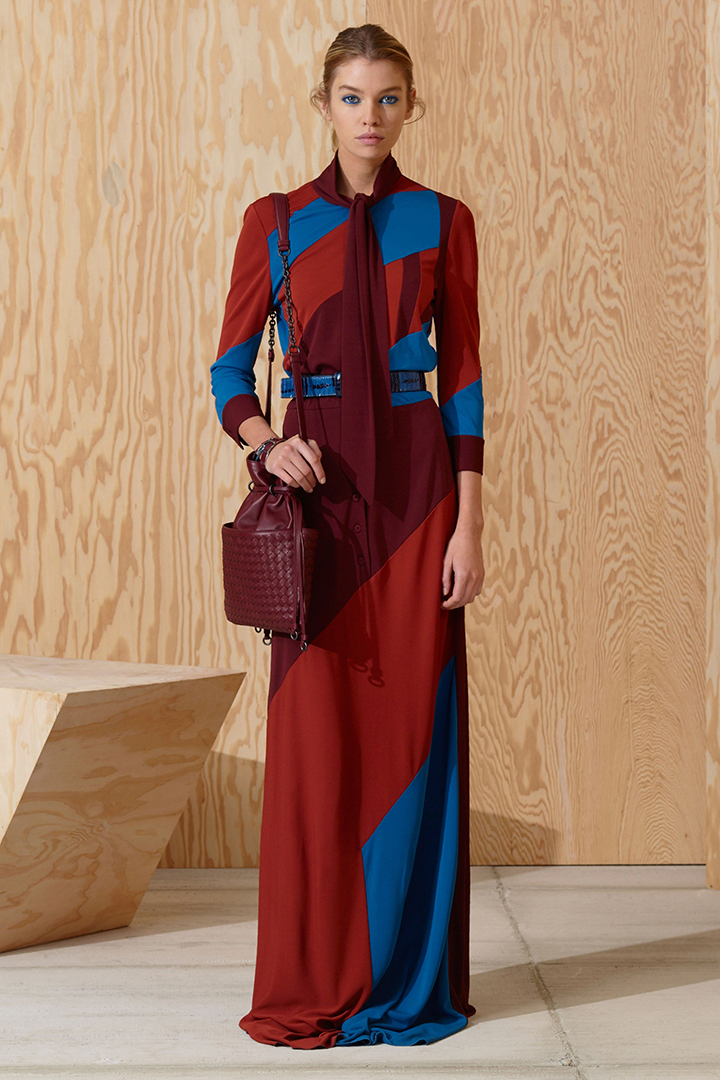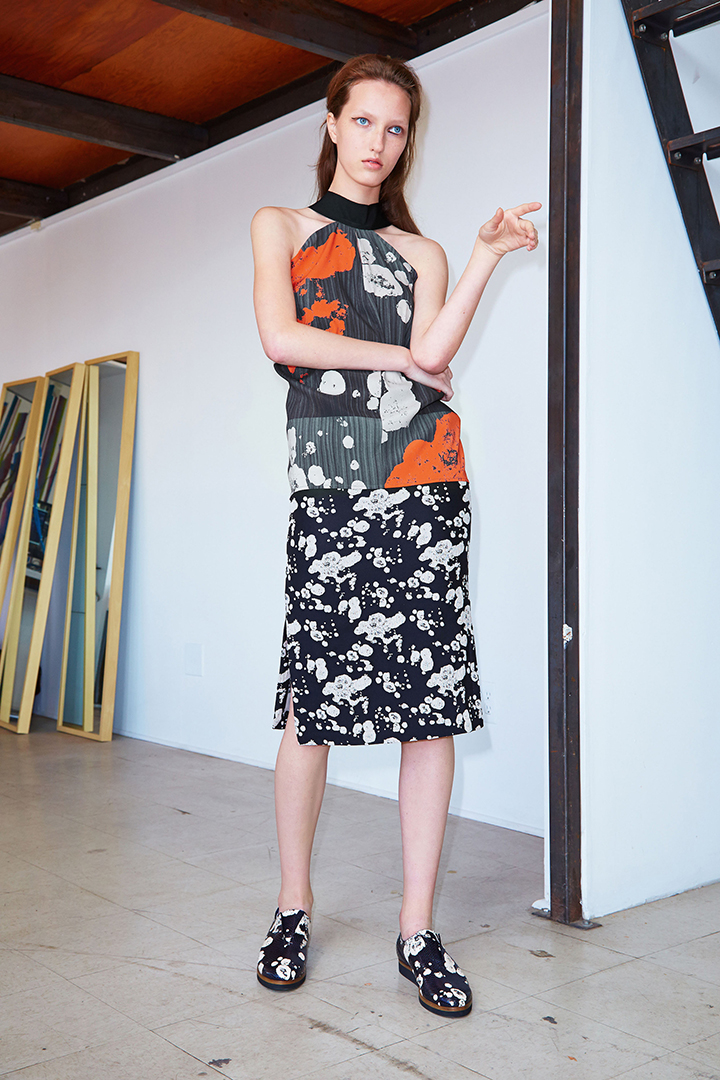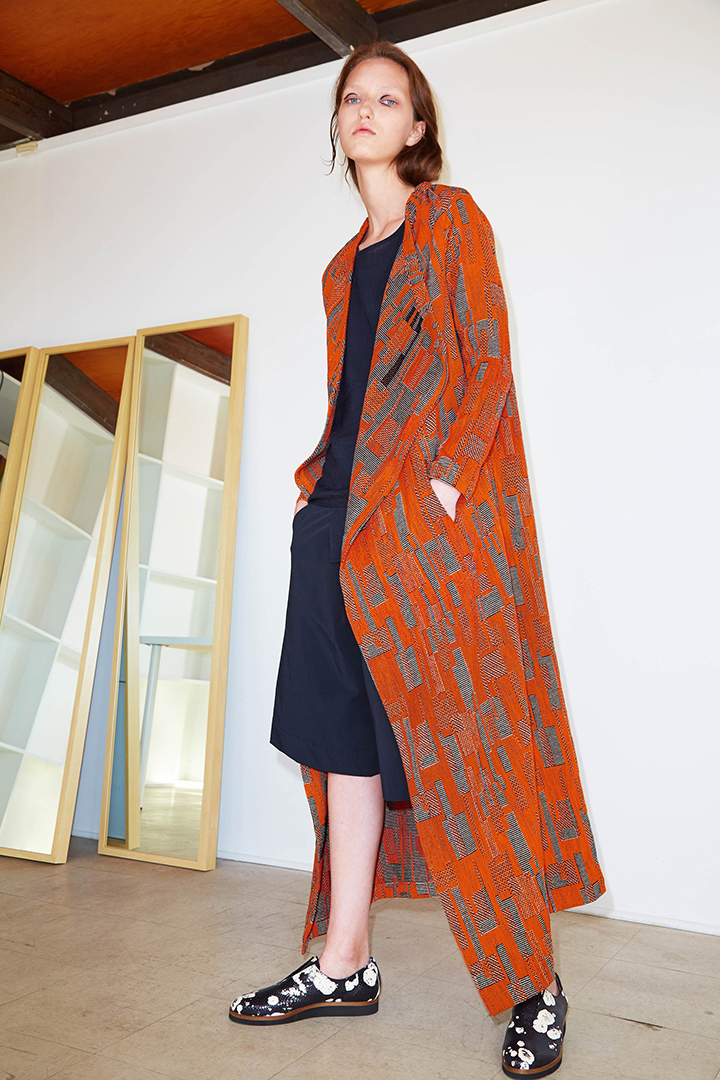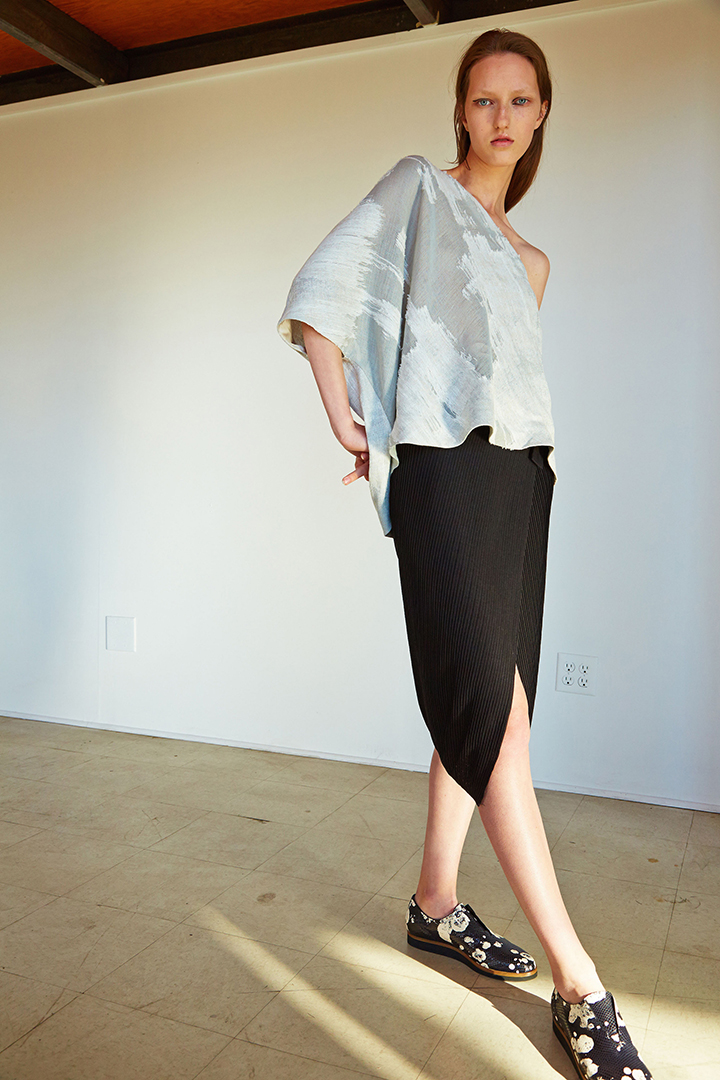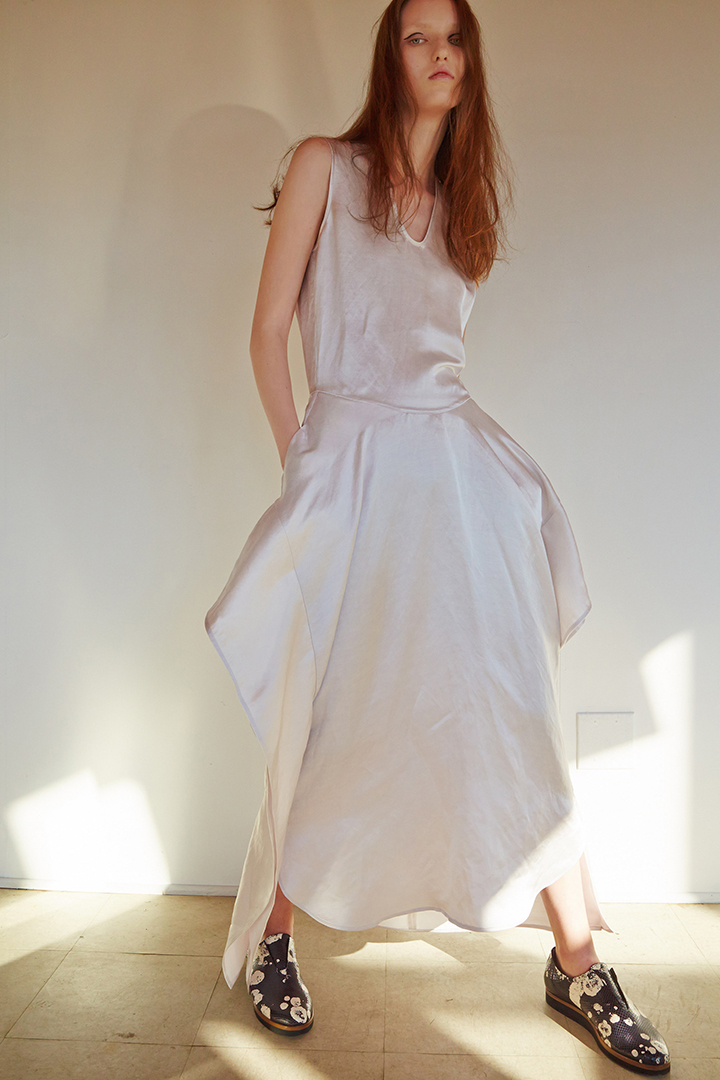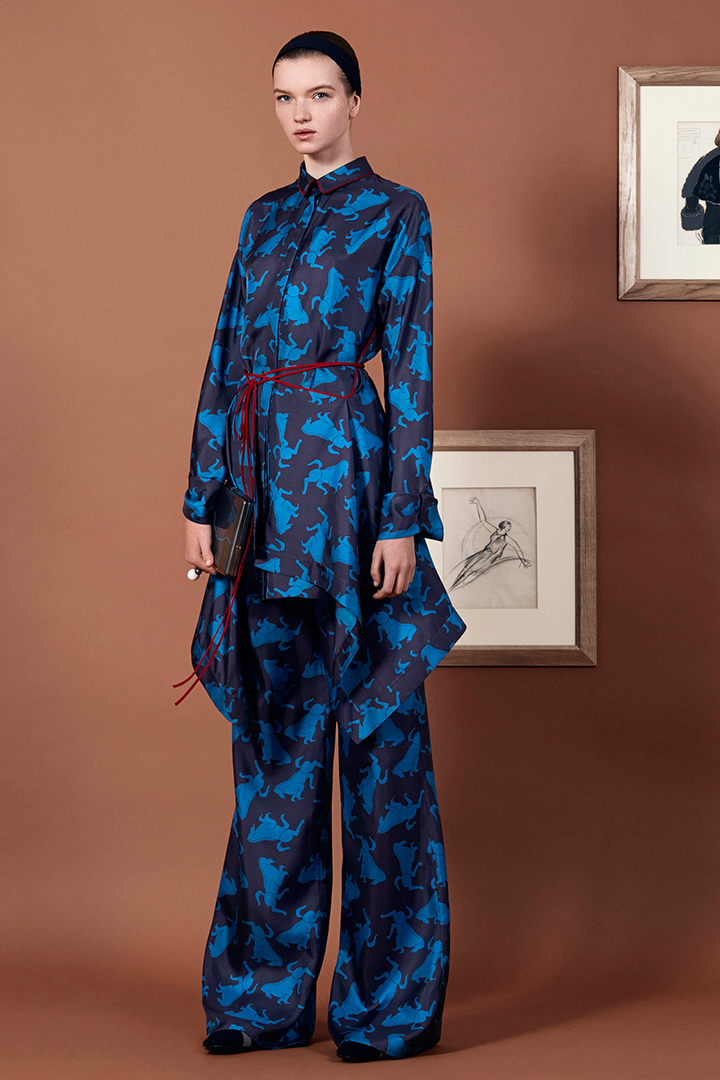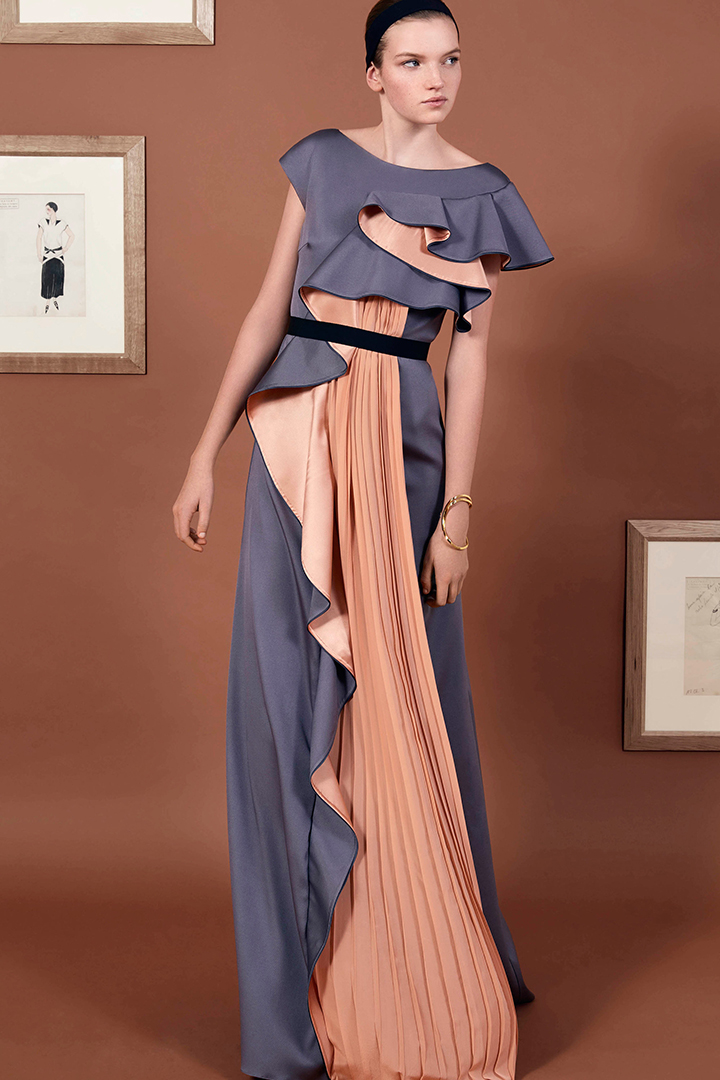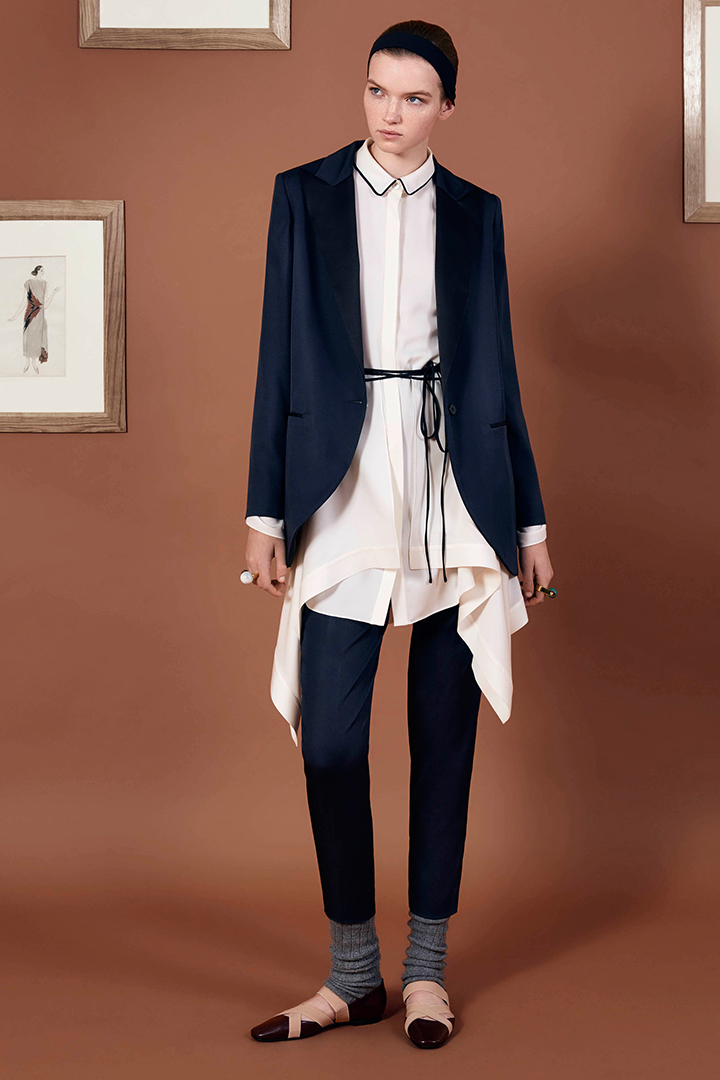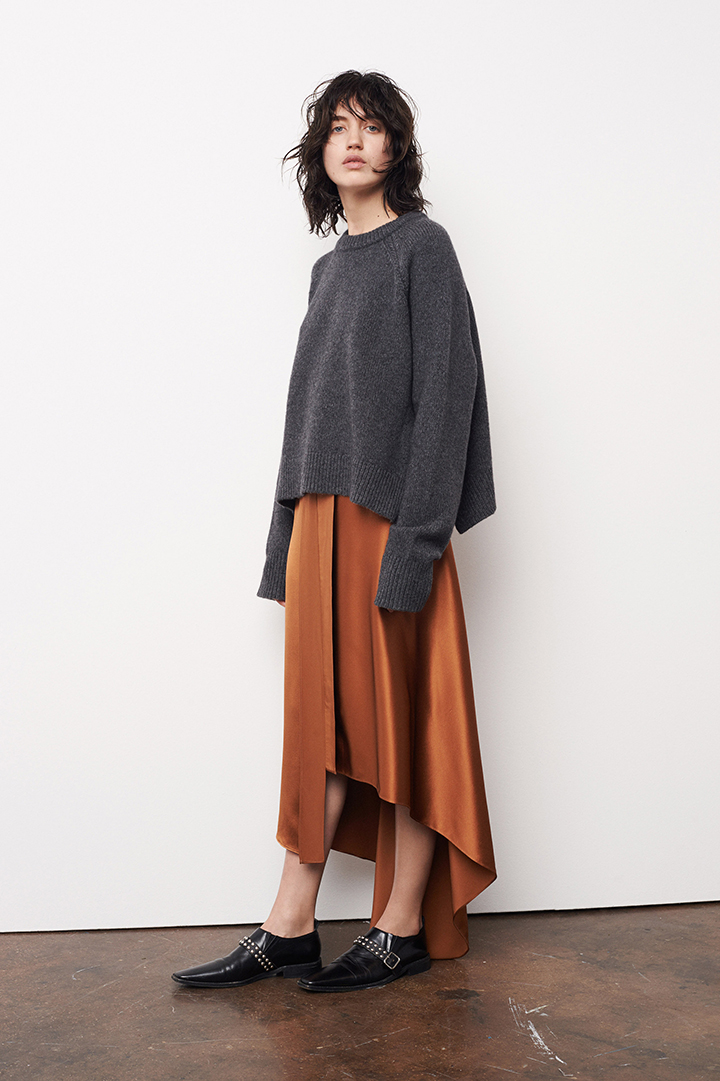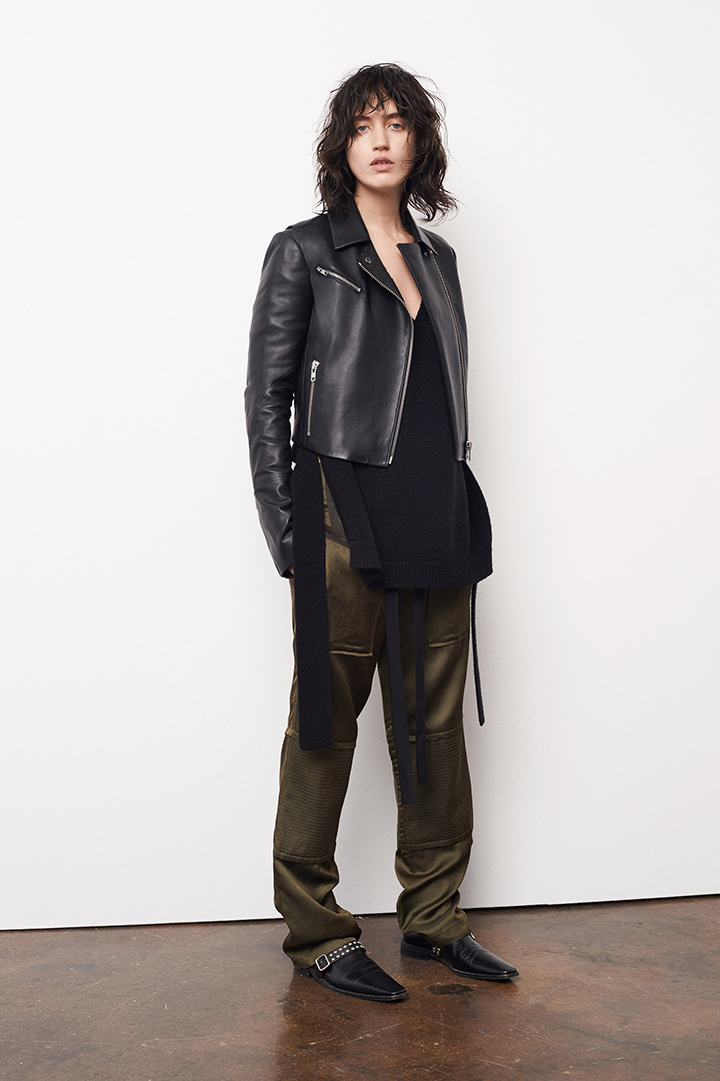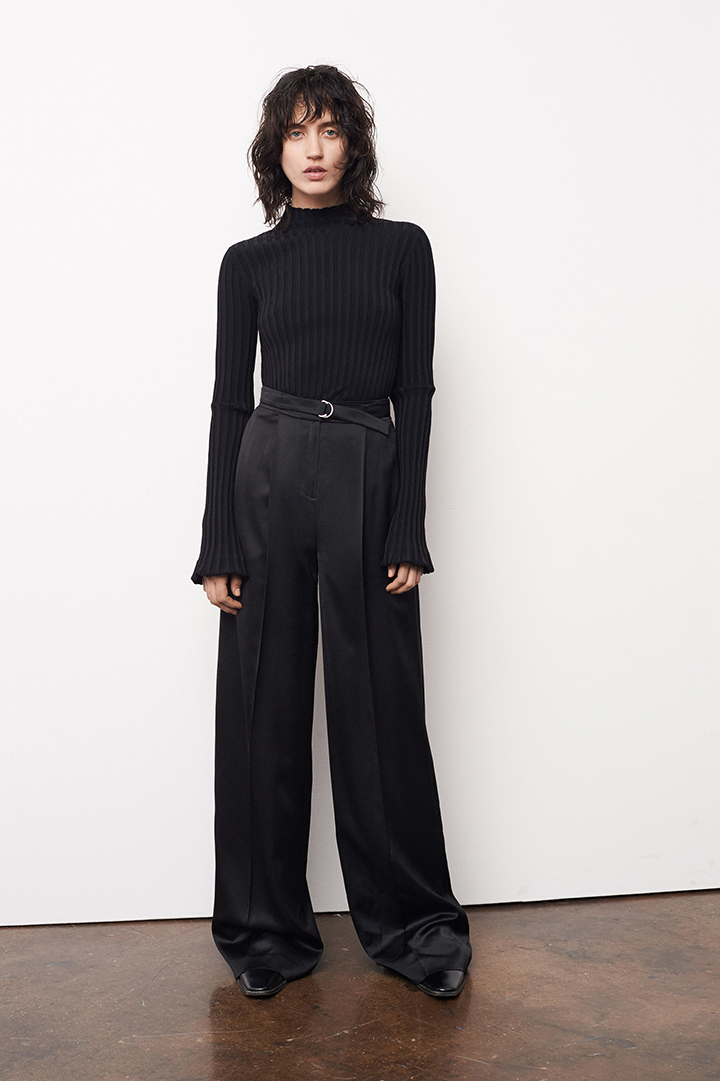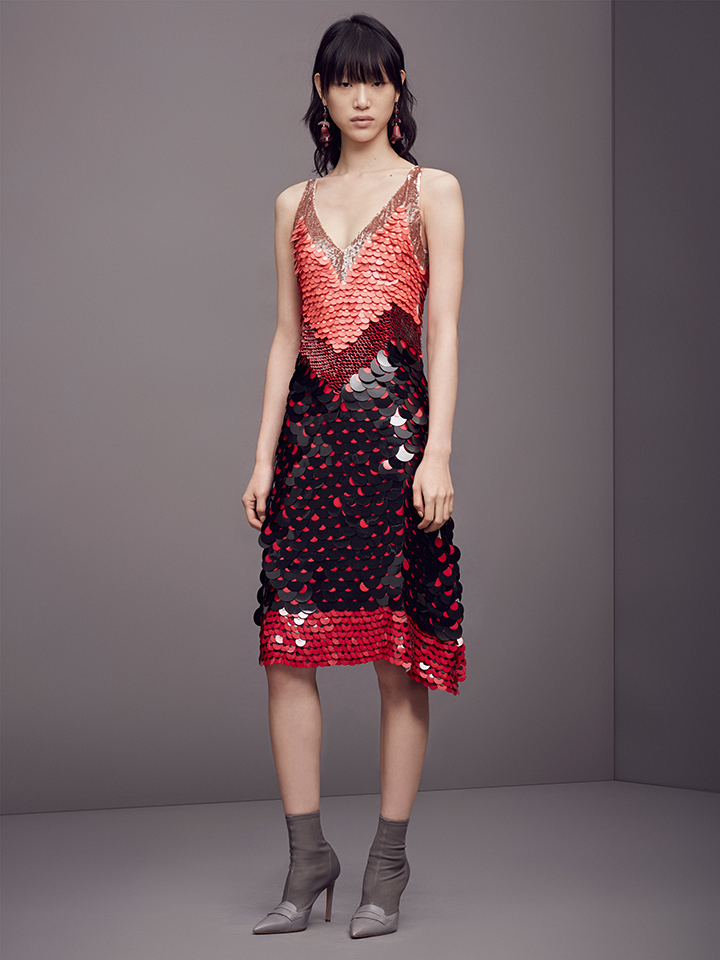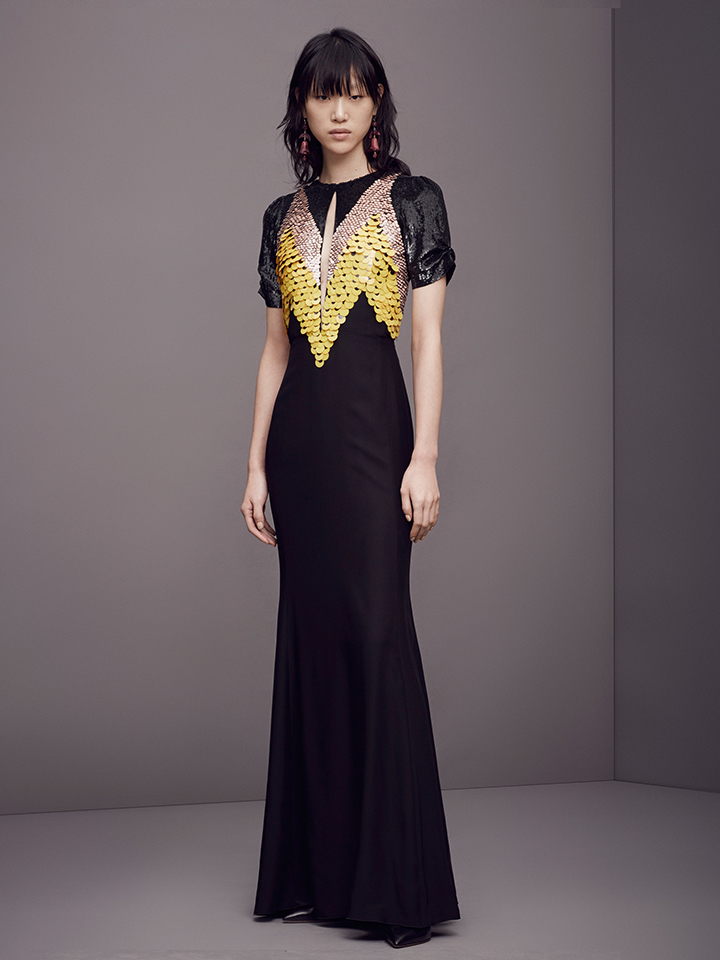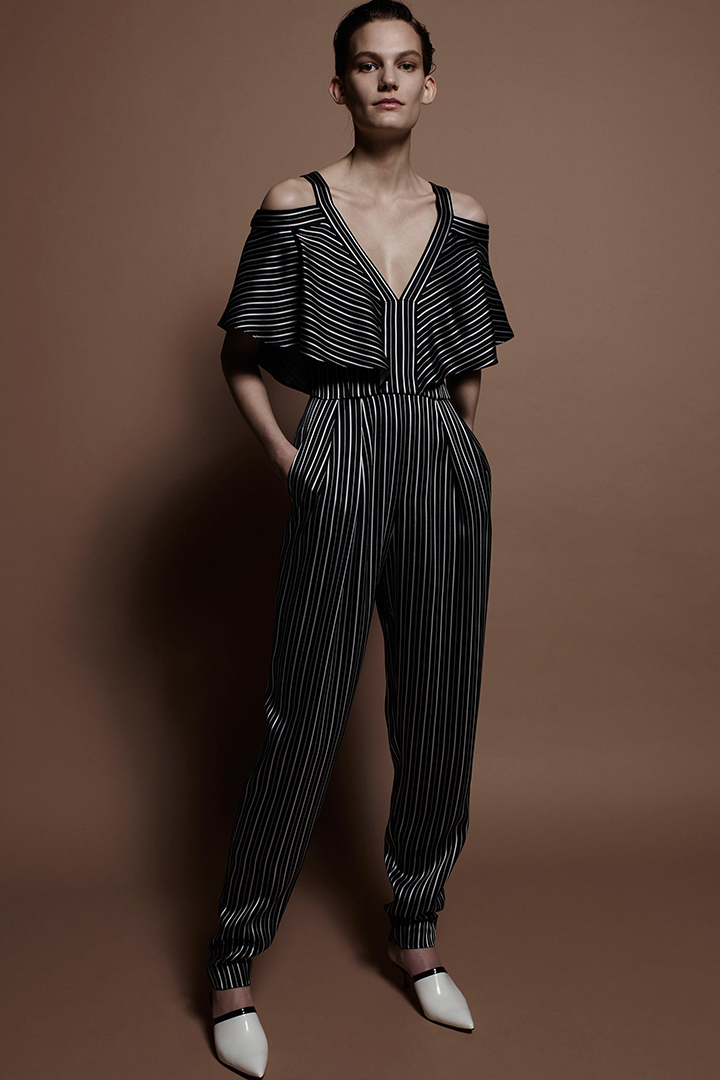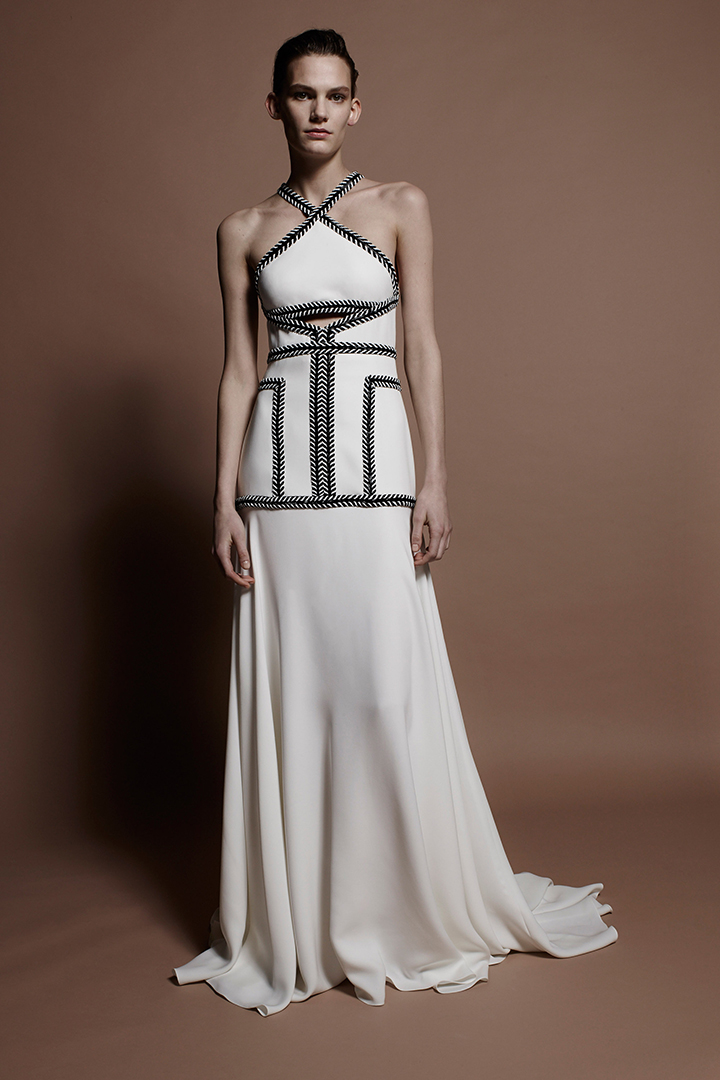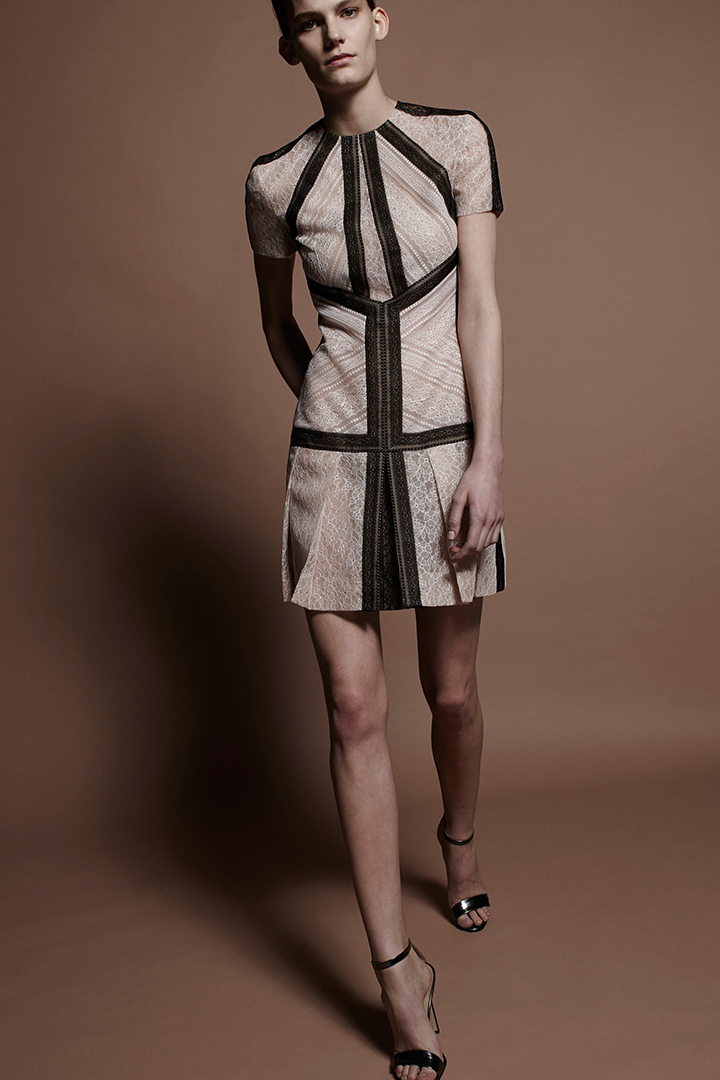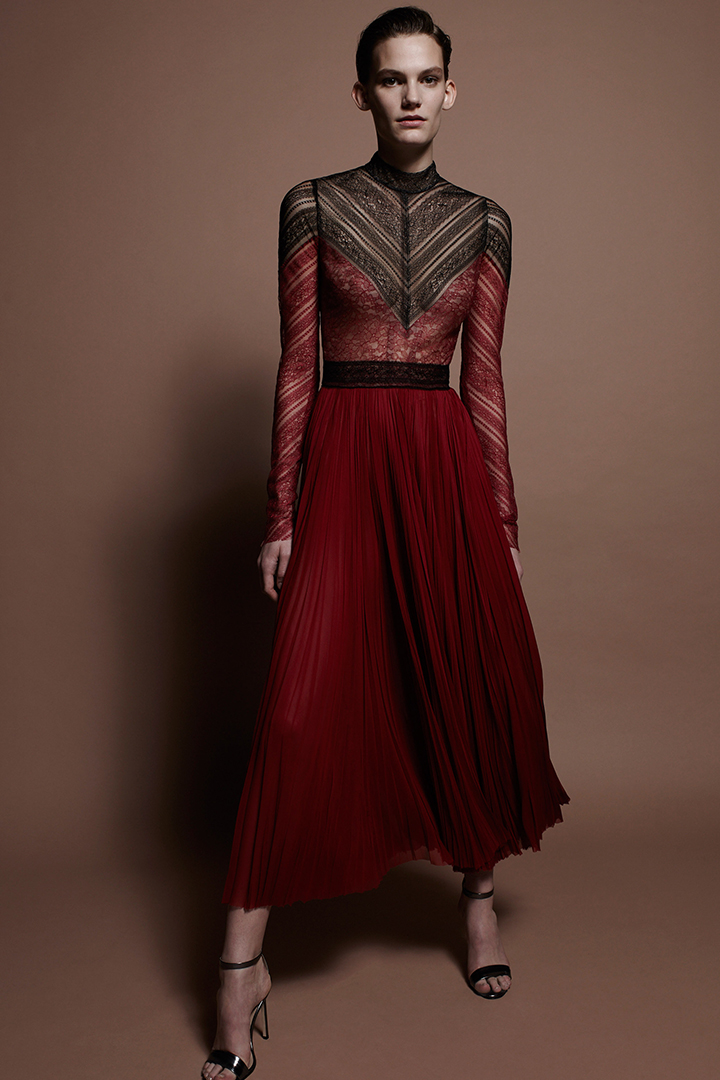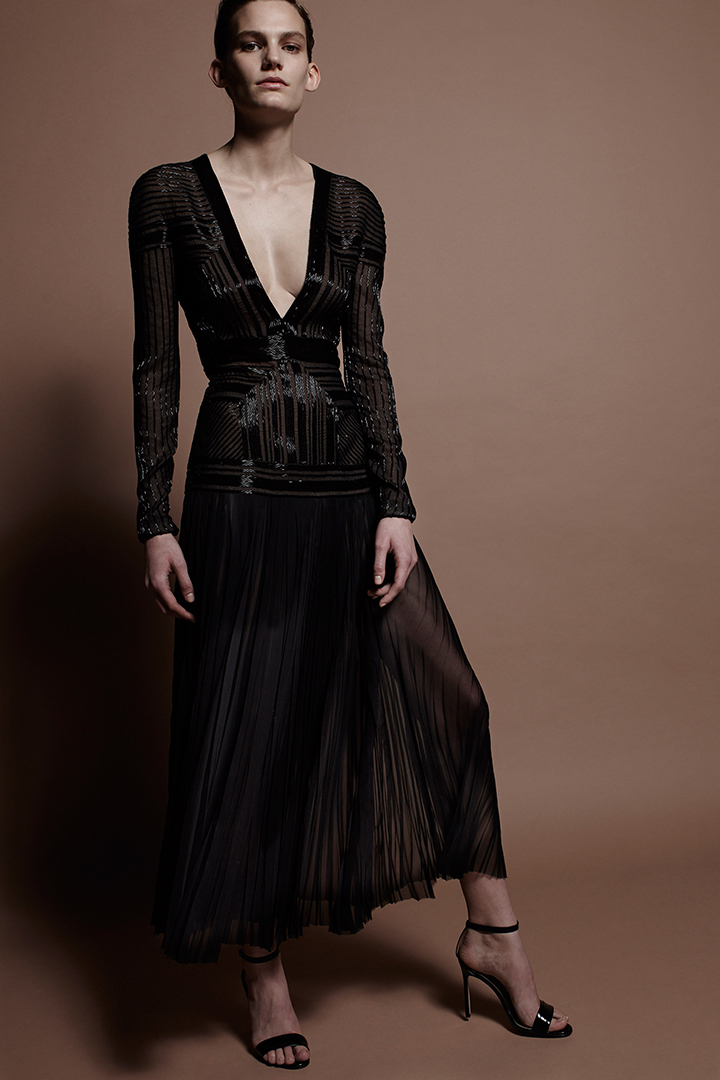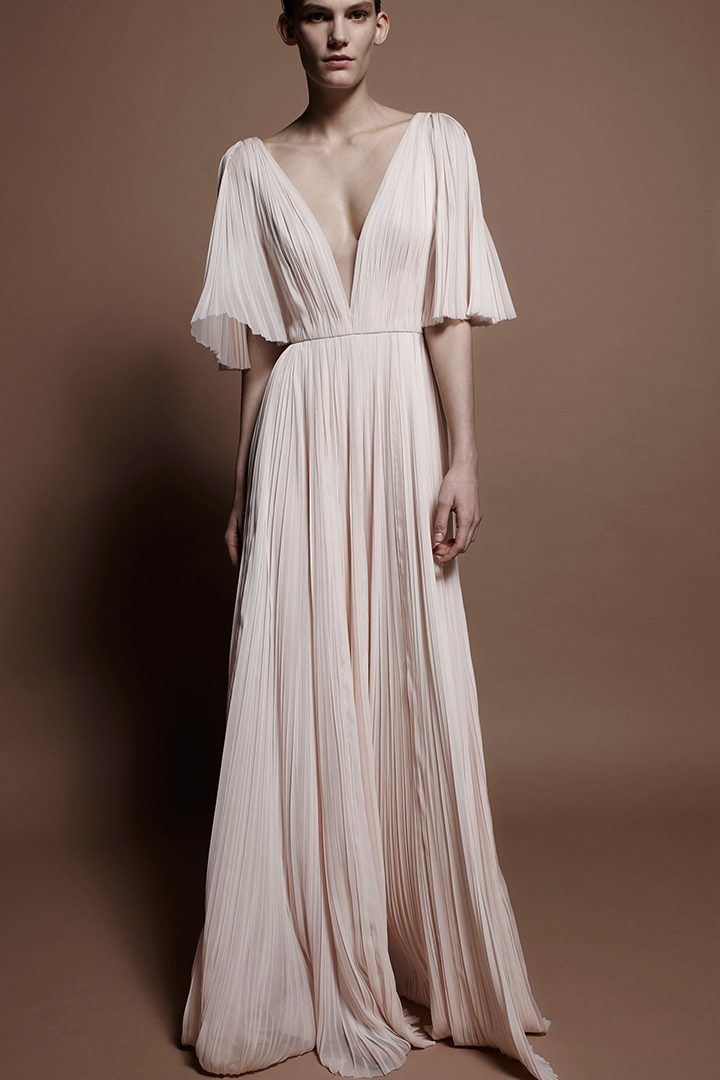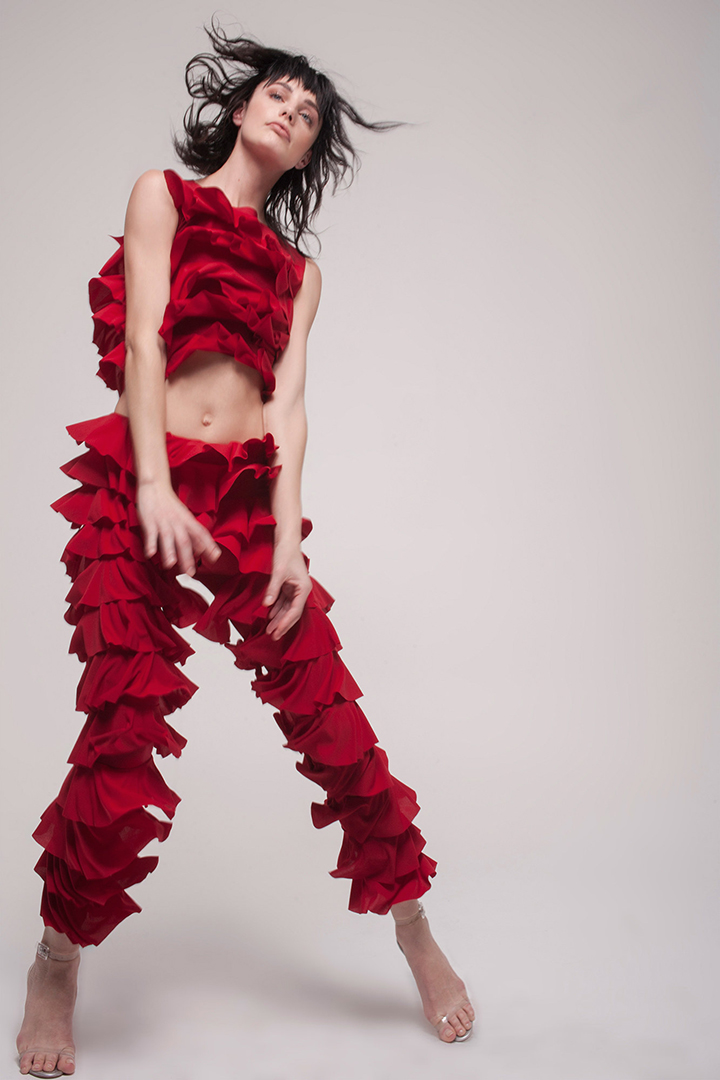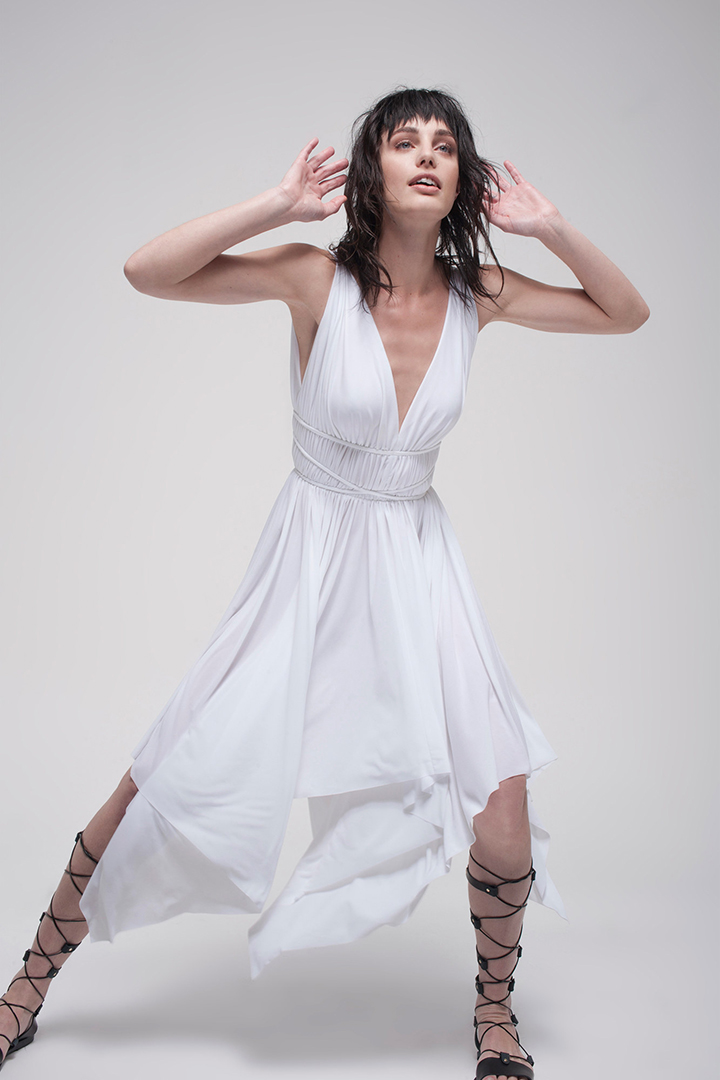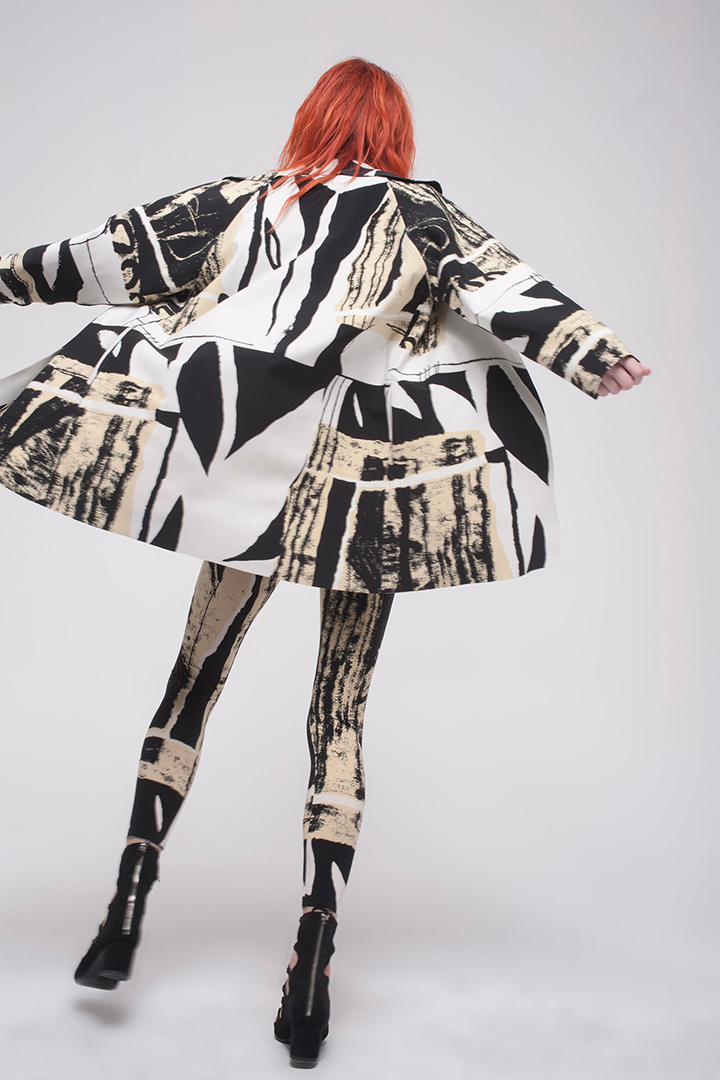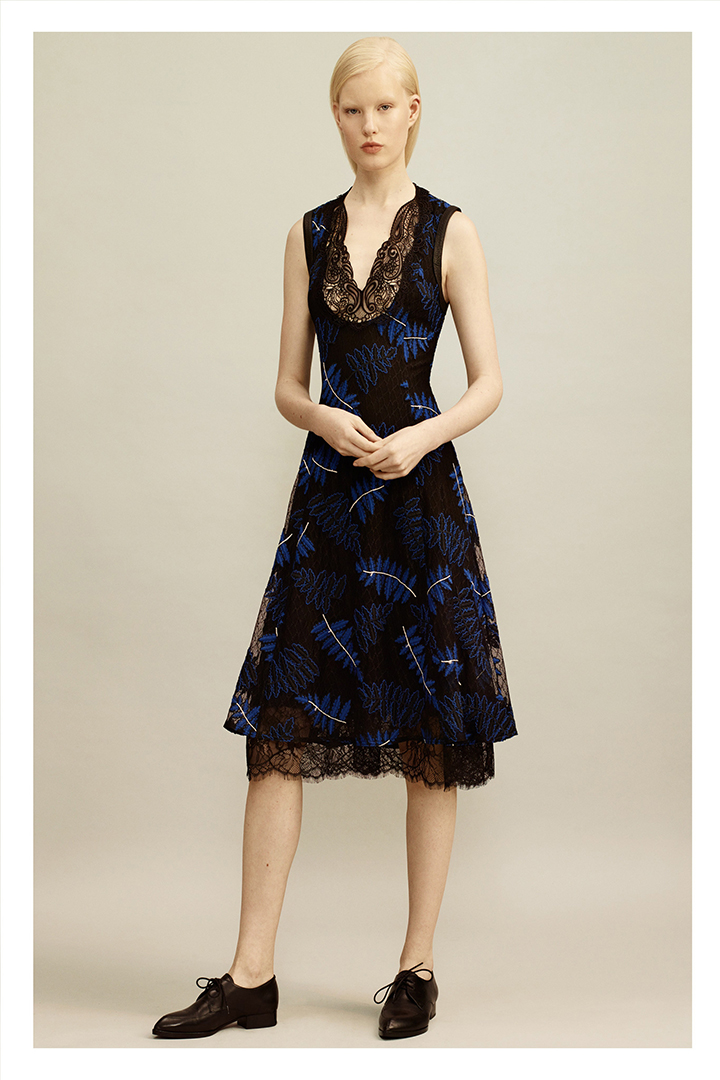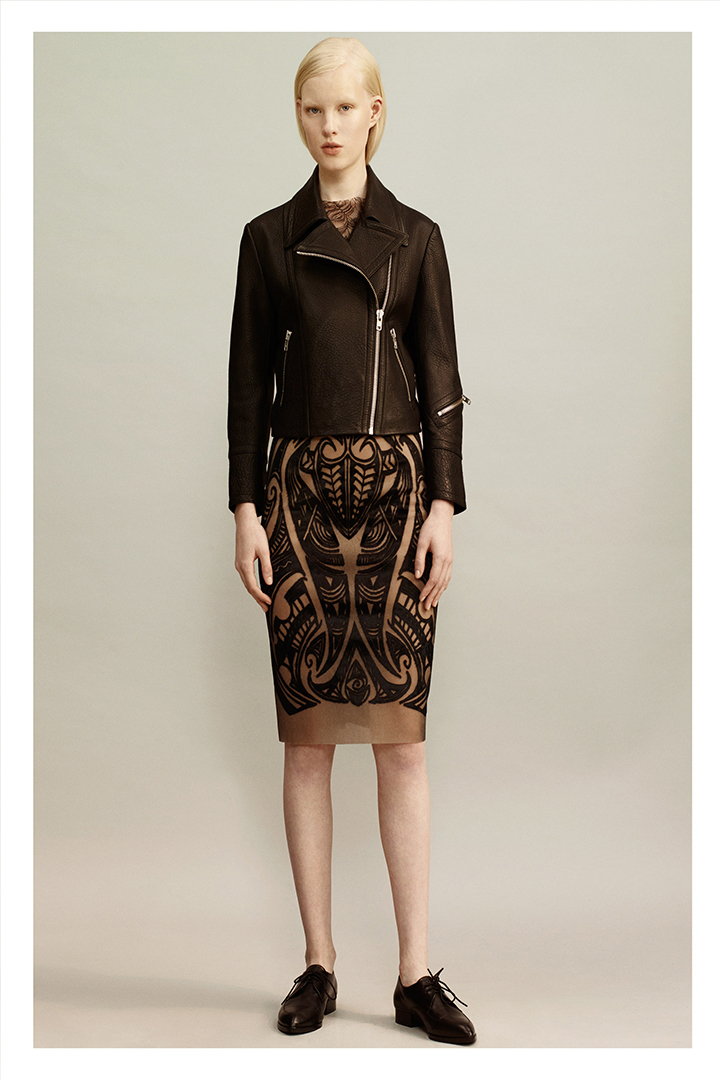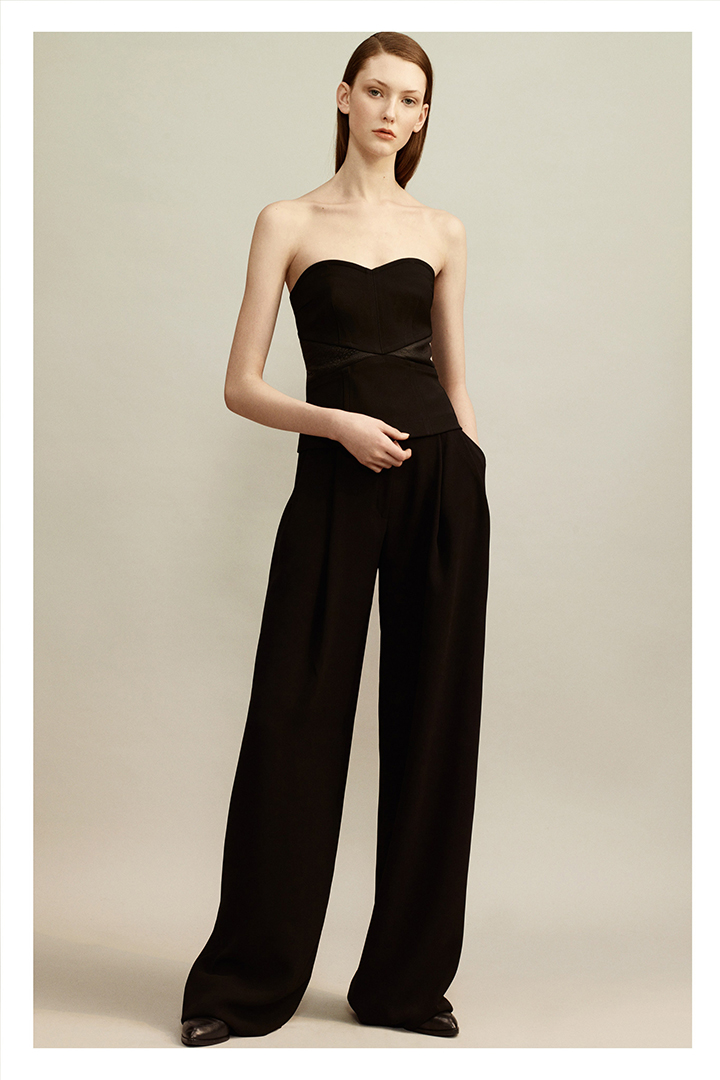Flashback
The Evolution of Balenciaga?
It's not that I didn't like this show (mucho credit to those kick ass flame throwing tights/boots), I love clothes that can be worn one way and modified to wear differently. These are the clothes that I wish I could make for myself, chopping them up and refitting them to my shape. They are experimental and witty. Yet in this show, I see Vivienne Westwood without the curves, Chanel, Maison Martin Margiela and Vetements. The latter two, Demna Gvasalia has designed for. Yes, no idea is a new idea, it's how you make it your own. No doubt that Demna is extremely talented and the house can evolve, he has a huge cult following, it's just that with all that talent, Balenciaga deserves something different.
Celine Spring 2018
The confident woman
Late 70s + Early 80's
The Deep End Club →
ALTUZARRA SPRING 2018
Pom poms, double wrapped belts, waist nipped jackets, gladiator sandals and the color red, describe things that I love in fashion. It's all in details yet sometimes there can be too many details. I am sure that's what the reviews will say about the Altuzarra Spring show. For me, I see looks that I would love to own.
SMART Leggings →
Like A Glove are smart leggings measure your shape and send the data to it's app. The app matches your measurements against jean’s. It then finds brands and sizes that fit your shape best. I am amazed by this, it takes away all the frustration of trying on a million jeans in the dressing room. It can also track weight loss, in measurements.
This seems the natural next steps to personalization. I believe that in the near future, these leggings will be sent to you by shops/retailers to get your fit. Personally, I can not wait for the day that clothing is made specifically to your measurements, basically bespoke clothing, yet perhaps made affordable for the average working gal.
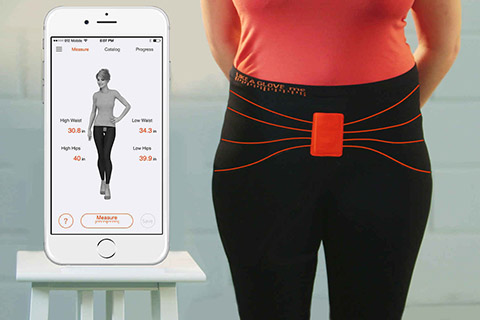


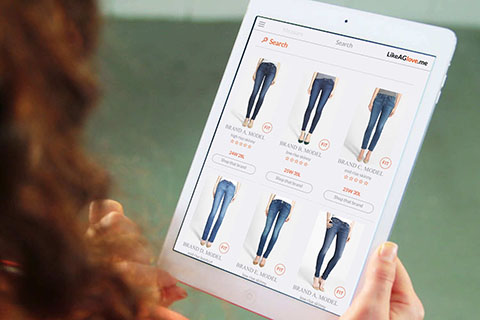
What's the attraction. Spring 2018 Ready-to-Wear A.W.A.K.E.
Why do we gravitate towards certain people, certain styles? Some things can't be explained. Spring 2018 Ready-to-Wear A.W.A.K.E. had me at her quirky and feminine look.
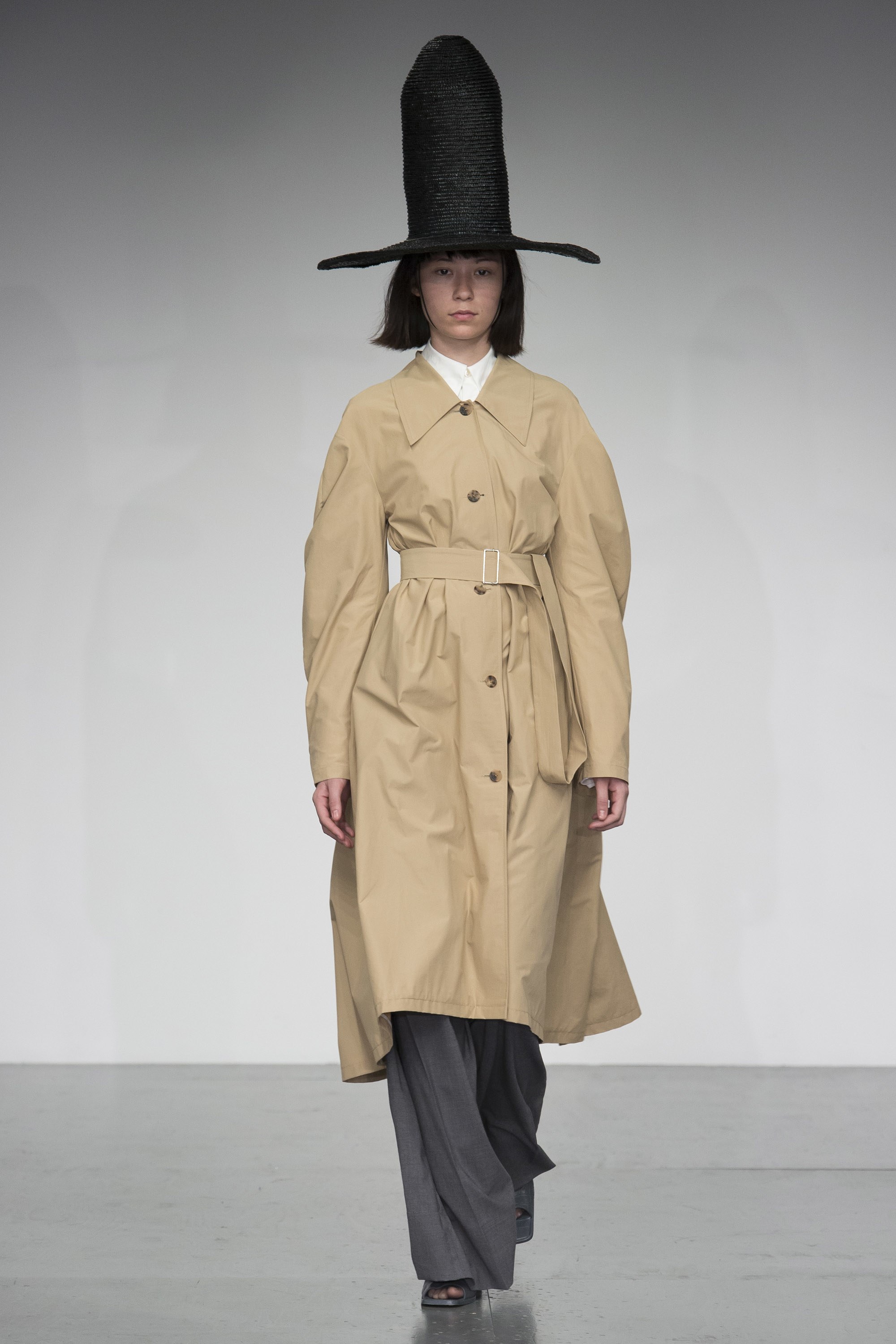
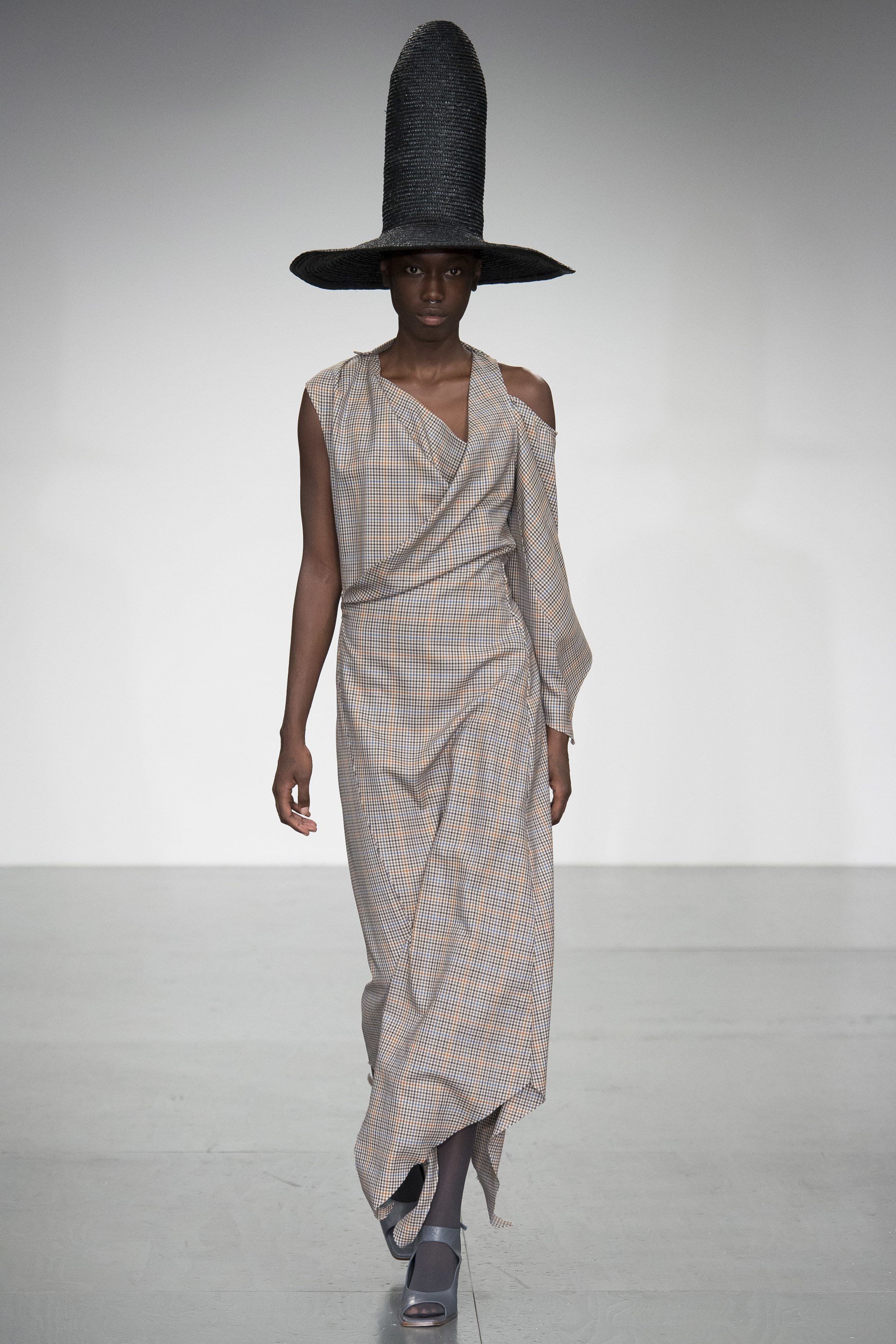
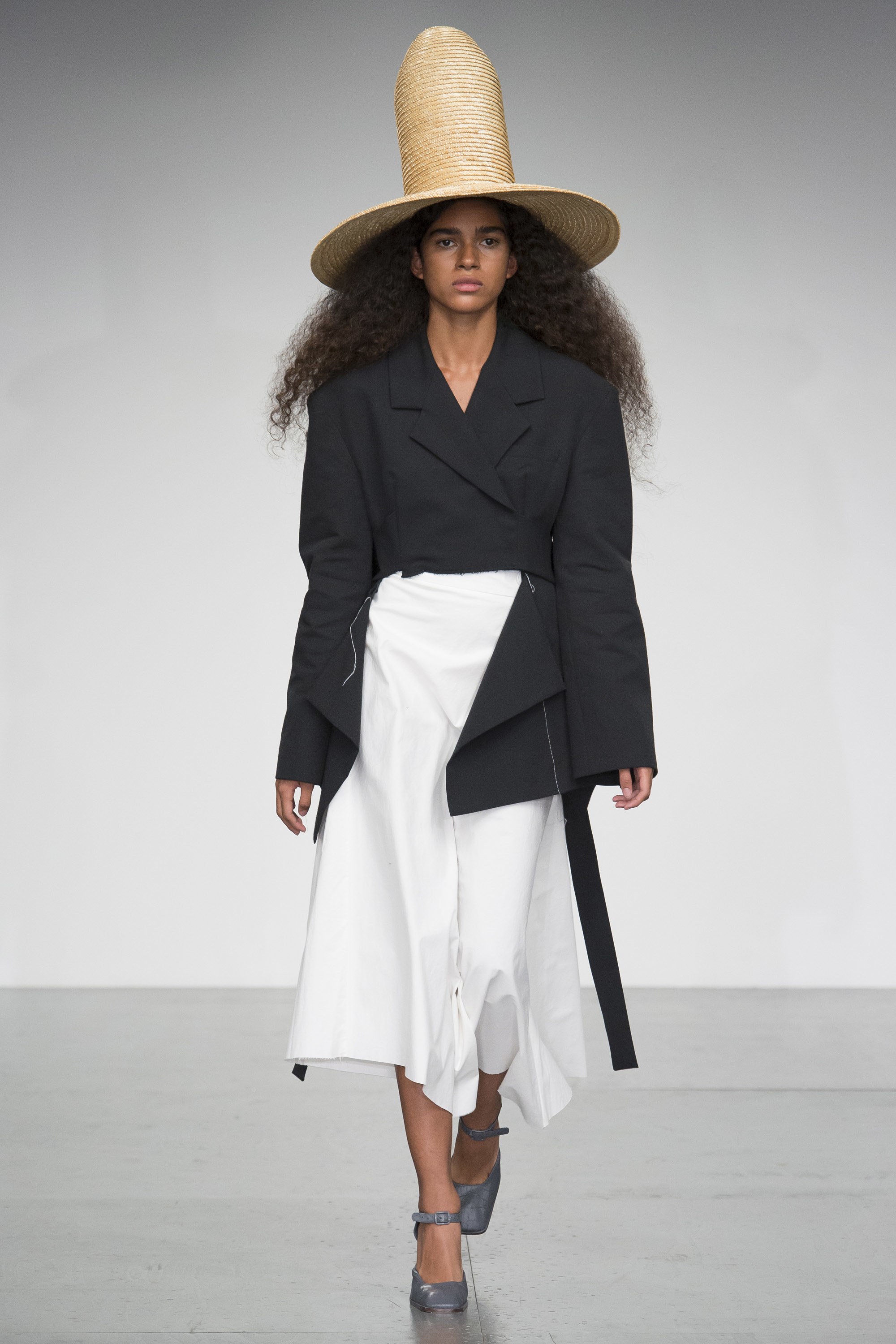

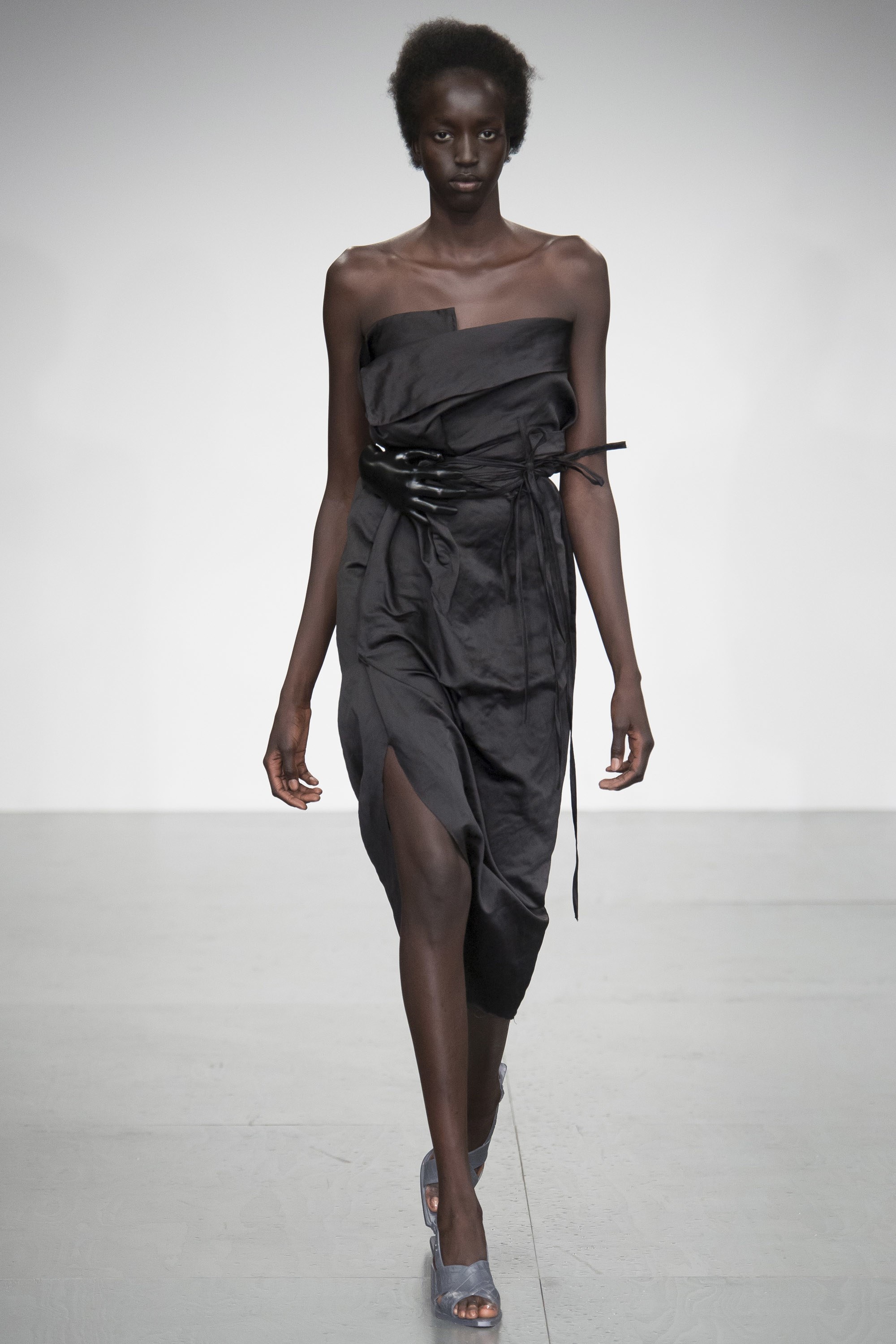
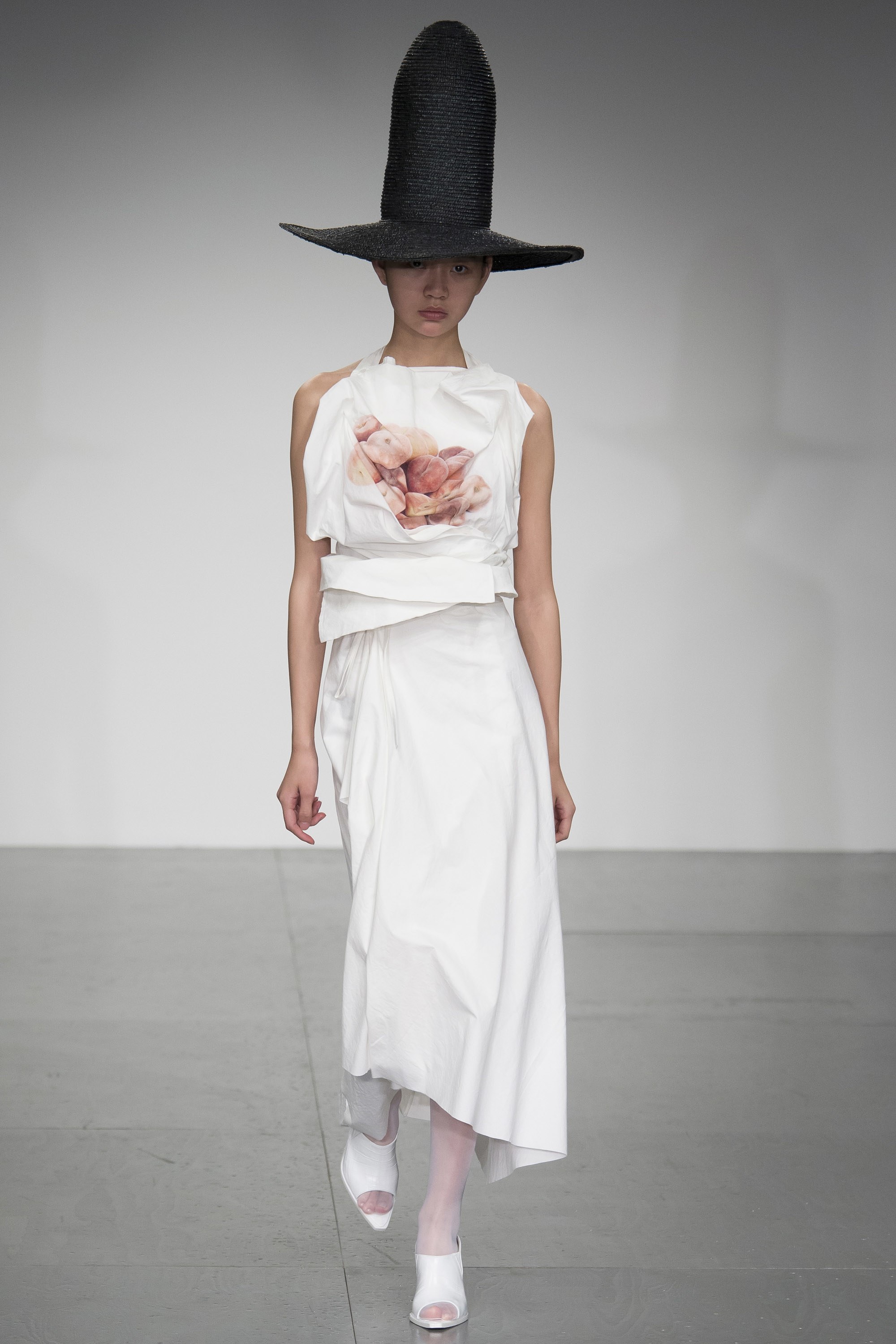
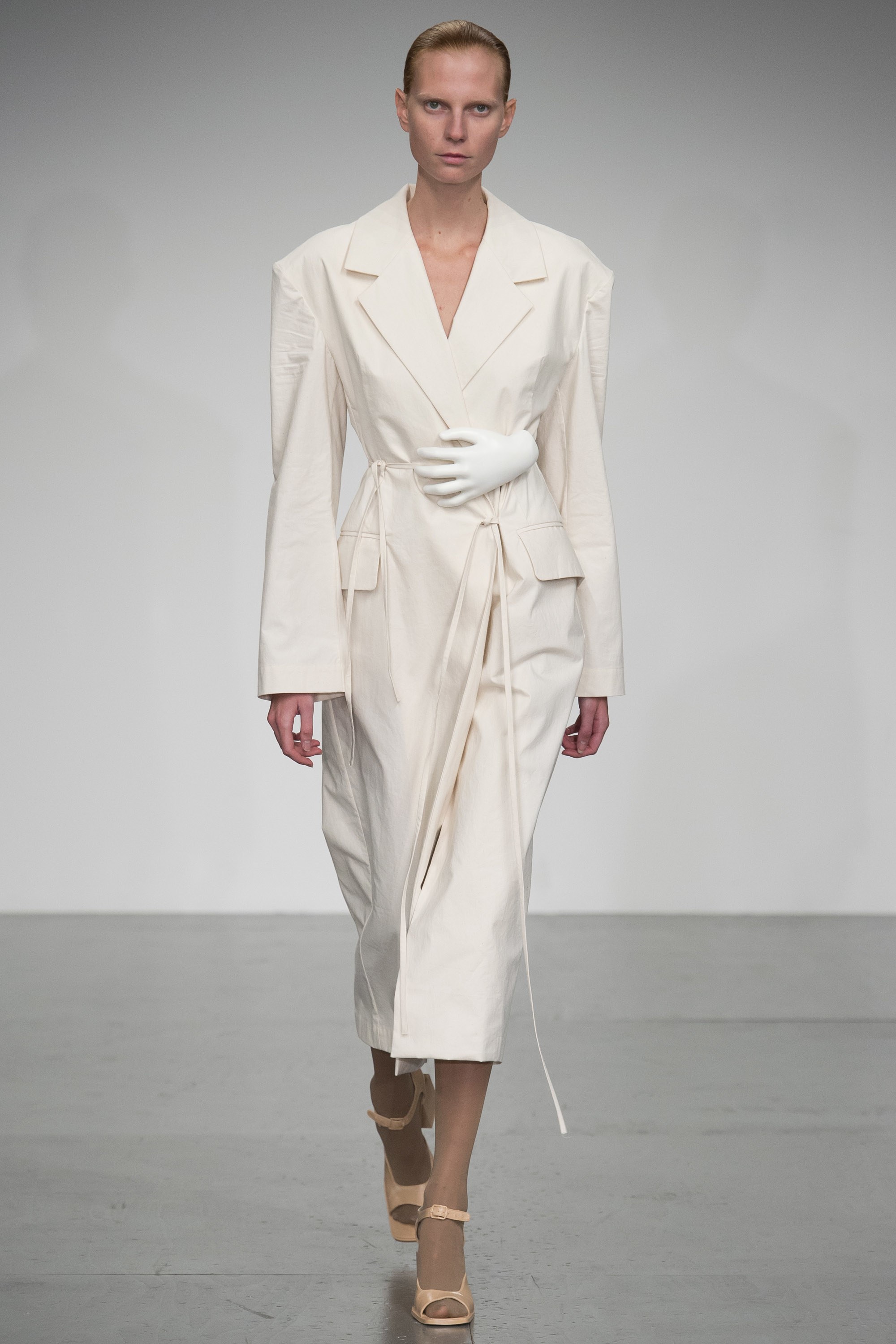
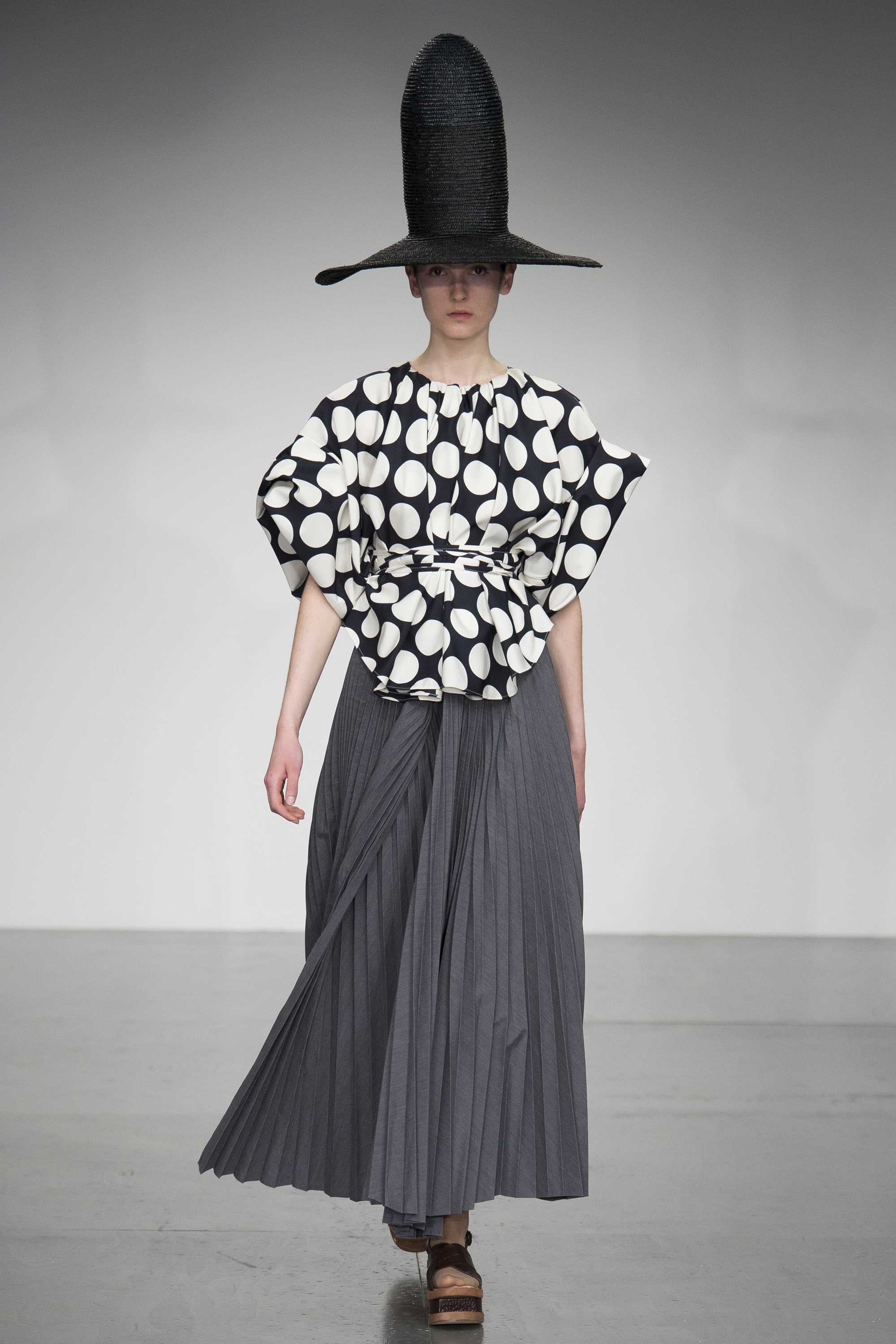
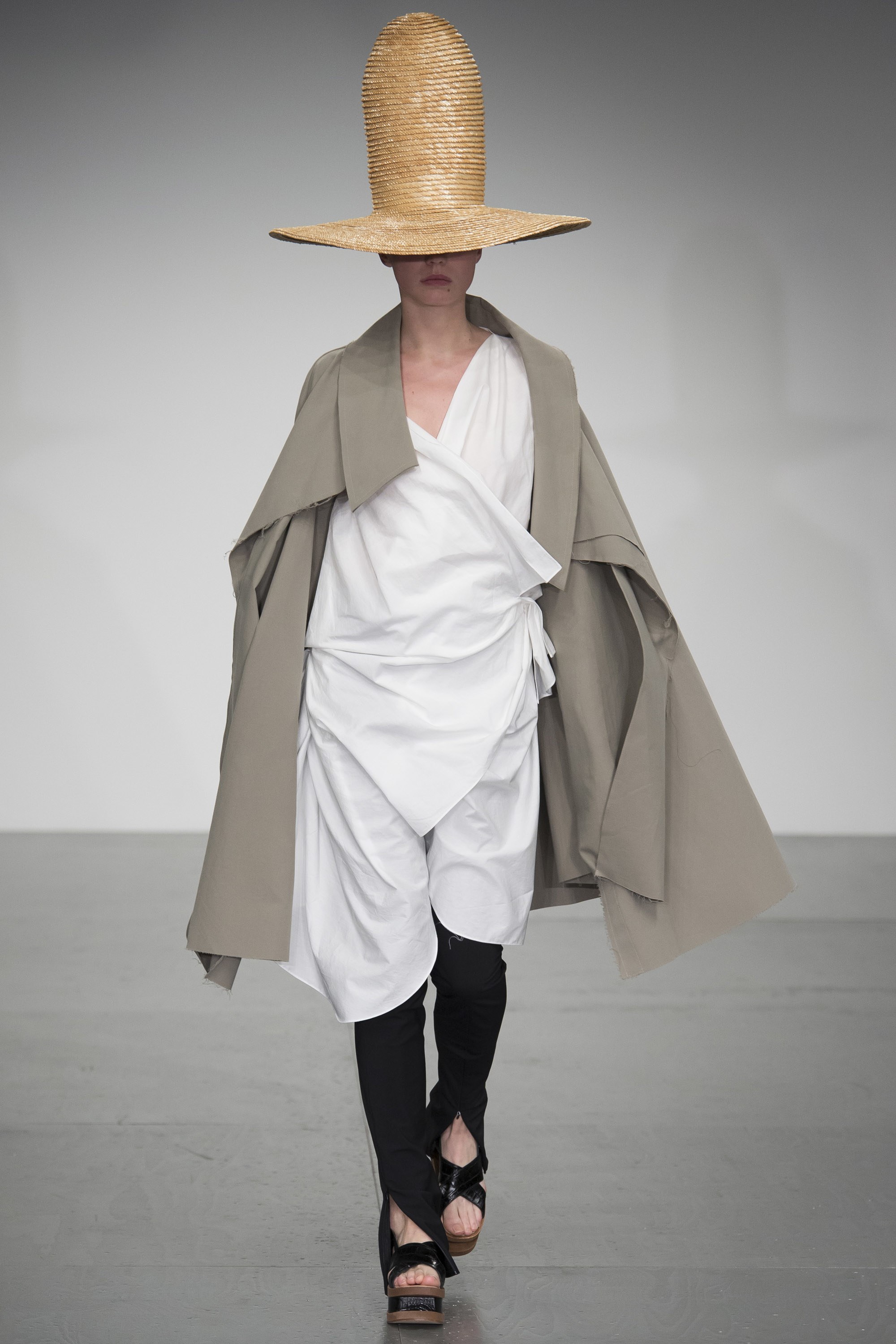
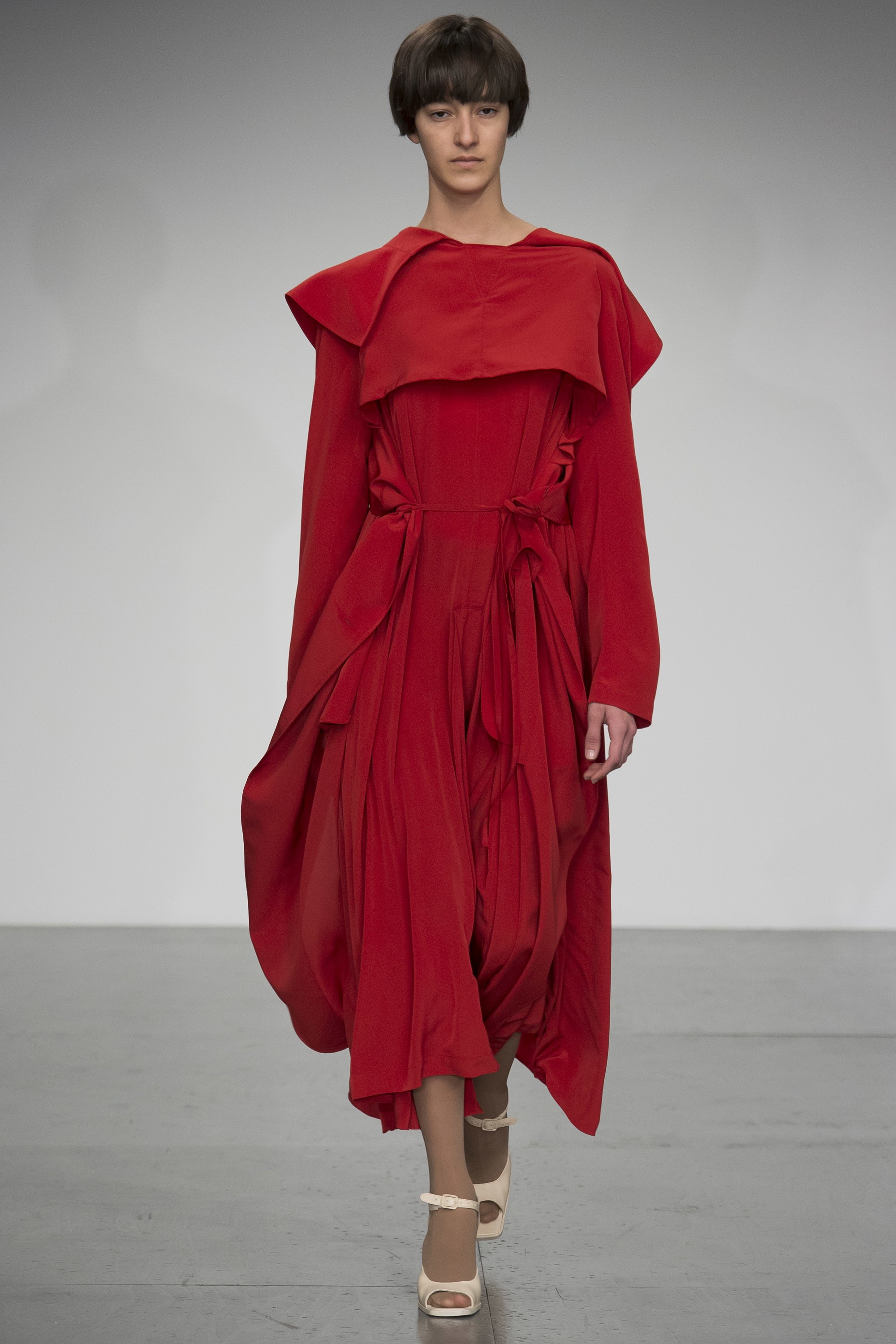
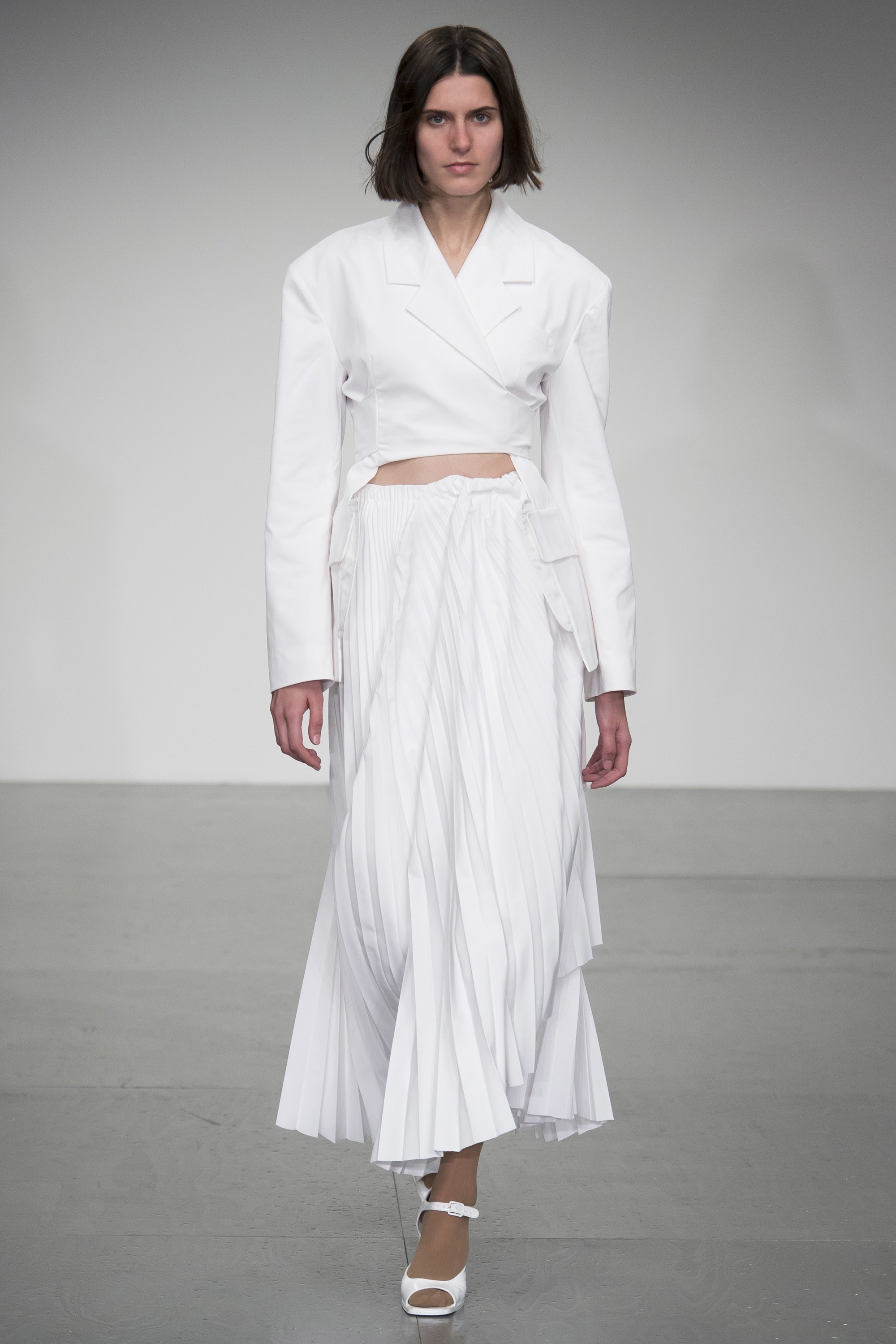
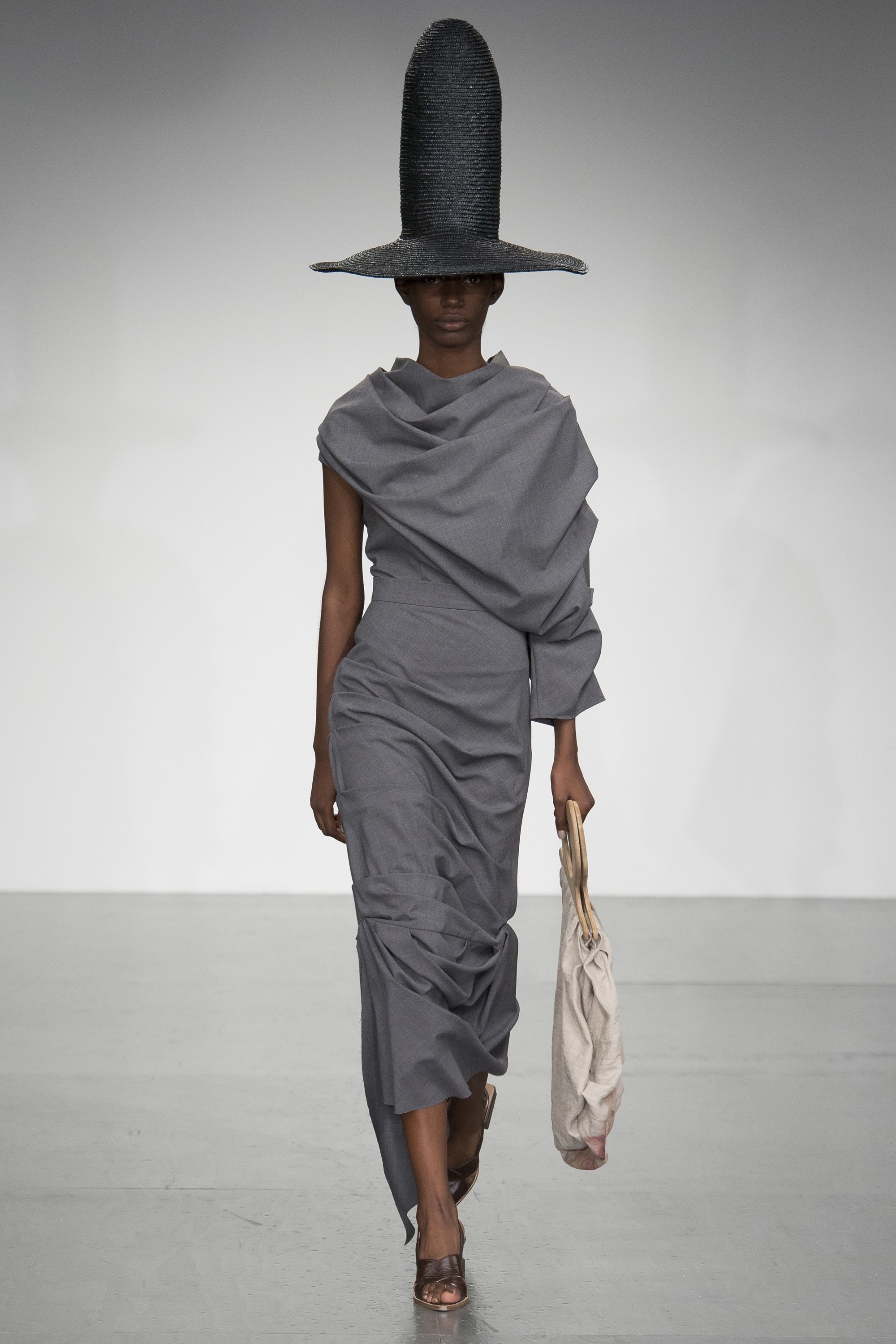
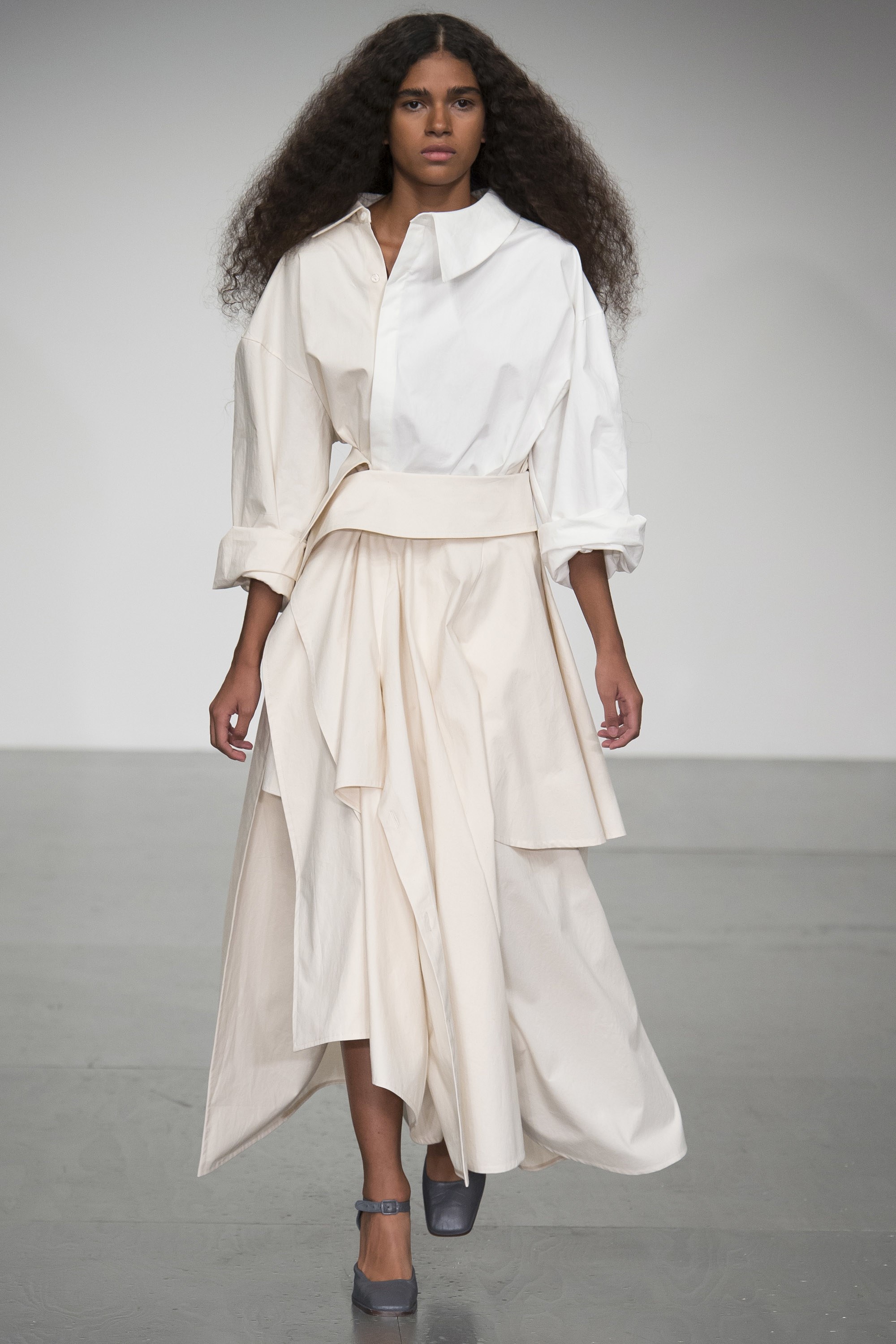
High-Yield Fashion Junkie Is Jonesing For A Fix
Six months ago, I got rid of all those clothes that no longer fit or looked good. I took a cold, hard look at what really flatters me. Now, I am suffering from an identity crisis and hating all the leftovers. Recently, I have seen a movement towards people opting for a capsule wardrobe or uniform. With life being as busy as it is, I find myself looking for that. I wish I had a dozen perfect garments I could never tire of wearing, like everything from Humanoid. It's ironic that I got paid for my taste and I am told that I have great taste but just not when it comes to myself. I feel this is an internal struggle that many women suffer from...what I would like to wear and what looks good me.
My old go-to formula consisted of a dress or skirt with a sweater or tee, black tights with high heeled sandals or tall boots plus an occasional blazer. A-line skirts and dresses were my comfort zone. They hid my stomach/thighs plus the black leggings hid my legs. I’m forcing myself to really love something plus fit into a list of key pieces for my lifestyle, with a few standout pieces. This list doesn't address summer, which is an entirely different animal, but now that I am in Dallas, I am going to have to change that.
In my world, I believe every woman should own:
1. a wool camel coat or a shearling coat
2. a soft lambskin jacket that is good for all seasons
3. a lightweight army jacket, for layering
4. two to three blazers, especially one black
5. a few fabulous knit + cashmere sweaters: comfy + fitted
6. some woven button down shirts: patterned, solid, comfy + fitted
7. white ribbed sleeveless tee-shirts
8. camisoles for layering, I especially like the ones from Hanro
9. a skinny and baggy jean, leather pants, jodhpurs, black leggings and for me, overalls
10. v-neck tee shirts for layering
11. a few dresses and skirts, I opt for a-line due to my shape
12. flat boots: ankle and tall
13. a sneaker
14. a flat pointy shoe. I like pointy because it elongates my legs
As for heels, it's sad to say but they are getting harder to wear :(
Since the advent of the internet, I've become a online shopping junkie yet my addiction has helped my bank account because it has forced me think about my purchases. No longer can I shop all day like I used to because the results would either leave me with nothing or with items I was unsure of. Now, I am holding the new things I bring into my closet to a very high standard. It’s a challenge. Let's see if it lasts, cause I am fickle when it comes to looking good.
Bon Ton Roulet
People report finding Jesus in the strangest ways; today, one of those ways might be in a cake. That’s because it’s Mardi Gras, also known as Fat Tuesday, the last day to eat King’s Cake before Lent begins. The King’s Cake accompanies festivities to commemorate the Epiphany, the day the Magi (interpreted by some to mean “kings”) arrived in Bethlehem and presented gifts to baby Jesus the twelfth night after his birth. The cake is a reenactment of Epiphany, with a bean or baby figurine baked into the cake to symbolize Christ and is eaten throughout Carnival festivities.
Lea Maupetit →
Nodels?
Nodel is fashion industry slang for a person who is not a model.
Real people in real fashion? Are designers catering more to the "real" woman or is it just a sheep in wolf's clothing? Don't get me wrong, I love to see real people in designer clothing, but it is a rarity, mostly we see pretty, skinny, tall socialites or bloggers representing brands. This SS2017 runway season, we did see more diversity in ethnicity, shape and age. For example, Carven, who featured friends of the brand of all shapes and sizes.
I have mixed feelings about this topic because I love the fantasy of fashion yet I too, want to wear that fantasy. From my experience, it is really hard to dress real people in paid ads and get what the client wants unless the "real people" are skinny. With all the reality today, I wondered if the public wants to see real people in fashion ads or keep it as models. Will there soon be a break through for the real person who wants to wear designer clothing?
Why Fashion Brands Should Think More Like Tech Companies by Elizabeth Segran →
You may not know Karen Harvey by name, but if you're interested in fashion, you're probably aware of her handiwork. She's the founder and CEO of Karen Harvey Consulting, and for the past 16 years, she's been a talent spotter for some of the world's top fashion brands. She's responsible for discovering many of the well-known executives currently running the industry.
She recently helped place creative directors Stuart Vevers at Coach, Danielle Sherman at Edun, Giovanni Morelli at Stuart Weitzman, and Tom Mora at Cole Haan. Previously, she helped steer Jonathan Akeroyd to CEO of Versace, Jonathan Saunders to chief creative officer at DVF, and Francesca Amfitheatrof to design director at Tiffany. (She's also involved in several other executive searches that she's not at liberty to talk about because of non-disclosure agreements.)
In addition, Harvey's consulting firm has helped brands like Coach, Burberry, Nike, and Tiffany define their long-term goals and develop strategies for achieving them, which often includes hiring new people. She's famous for her intense storytelling workshops, in which she brings together the leaders of a company to articulate what their brand really stands for and what they want it to accomplish in the future. And she's the founder of the Fashion Tech Forum, an annual conference that gathers leaders from the fashion and technology industries to discuss how to collaborate and learn from one another.
Harvey has watched the fashion industry evolve from the front row. She says that one of the most fundamental shifts has been how consumers want to engage with fashion brands. There was a time when people looked to fashion designers to tell them what was beautiful or trendy, but this is no longer the case. Today, she says, consumers dictate what they want—and the companies respond. "Technology companies, which are totally consumer-centric, have changed the way we relate to brands," Harvey says. "Many fashion companies, on the other hand, still have a tendency to create an aspirational lifestyle and assume that if the consumer wants to be part of that, they will just follow the brand."
"Technology companies, which are totally consumer-centric, have changed the way we relate to brands."
She believes that the brands that will thrive are those that focus on understanding their customers and meeting them where they are. Fendi, for example, recently launched a digital platform targeted primarily at millennials that invites people to share content in interesting new ways. On this new website, there's a page devoted to real people doing inspiring things, another that allows people to share unique and exciting experiences they've experienced around the world, and another that encourages artists to apply for a chance to perform at Fendi's headquarters in Rome. The point is to make Fendi's voice open and relatable, rather than aspirational and distant.
I sat down with Harvey to talk about how she is shepherding the world's top brands into this digital future.
Fashion brands tend to seek you out when they're trying to make some sort of change. What are some of the biggest needs in the industry right now?
Karen Harvey: No one calls a search consultant unless they want to make a change. They're looking into the future and seeing something they don't have.
A couple of years ago, I began to see that—holy crap—technology is going to take over. And meanwhile, fashion companies had their heads in the sand, asking me questions like whether they should put their e-commerce in the retail or marketing department. I realized that if that was the level of engagement with technology in the fashion world, we were going to be in deep shit.
I began to realize that we needed to have much bigger conversations with fashion CEOs. At the same time, I was getting calls from tech companies ranging from Intel to Samsung who were thinking about getting into the fashion industry. They noticed that fashion was so far behind technologically and saw a wide-open space for them to come in. By bringing these two parties together, we began to have productive conversations. And the bottom line is that when it comes to fashion, instincts still matter and design is crucial, but there are also a lot of things from the tech world that we need to start integrating.
What are some of the principles of tech that we need to apply to fashion?
It's three things: consumer-centricity, transparency, and speed.
The most important thing is to place the consumer first. Fashion had—and still has in many ways—a tendency to focus on the brand image rather than the consumer. The thinking was that if the consumer wants to live a glamorous lifestyle, they will follow the brand. This is very different from what is happening in the tech sector, where the consumer is at the center of the conversation and brands are talking to them in terms of where they are right now. Millennials were raised with technology that was perfectly calibrated to meet their needs, so it makes sense that they expect different things from brands.
"Fashion companies had their heads in the sand when it came to tech."
Until recently, few fashion companies had consumer insight and consumer engagement disciplines in their organizations. They want to create beautiful things and expect the consumer to follow. The problem is that by the the time they start to figure out that the world has changed, it's too late, and the consumer has moved on.
But at the same time, consumers are still looking to fashion designers to point us to beautiful things, right?
Yes, it's a hybrid. I've found that designers can't stand listening to consumer data, for the most part. They don't want data to inform them: They want whatever is inspiring them at the moment to inform them. But some are beginning to get on the path toward becoming closer to their consumers.
At the same time, data without creative talent is meaningless in the fashion industry. We still look to great designers like Coco Chanel and Yves Saint Laurent for inspiration. It's about integrating a focus on the consumer with a distinctive aesthetic. Brand image alone doesn't cut it.
"It's about integrating a focus on the consumer with a distinctive aesthetic. Brand image alone doesn't cut it."
I think Gucci is a great example of this. Under the creative leadership of Alessandro Michele and a fantastic CEO, Marco Bizzarri, they've made the brand modern and current, speaking directly to their customers and connecting with them in terms of values, but they have not lost their creativity.
Or think about Miuccia Prada, who is doing a campaign centered around the theme of 365 days. She's asking how you engage with the consumer every day of the year. It's studying everything that they are looking at, thinking about what they need.
The other thing you mentioned was speed and transparency. How is that changing the fashion sector?
We're seeing this everywhere in the fashion world right now, also driven by the tech industry's emphasis on speed. There's a lot of experimentation with "buy now, wear now." But there's also one-hour delivery and one-day delivery. There are lots of collaborations that help tell the story of the brand and keep the consumer's interest going.
And when it comes to transparency, consumers now expect brands to be open with them in every possible way, from the manufacturing process to the values of the executive team. They want to understand how this brand lives in the world and whether it connects with their values. This is now expected, and consumers can see through fakeness. So brands need to become very good at telling their story and sharing their culture.
Now that being tech-forward is a given, what other characteristics set a fashion brand apart? What makes a fashion company truly transformative these days?
In some ways, it comes down to things that have always been true in fashion. What is the brand's DNA? This has to do with all the non-tech aspects of the brand: product, design, brand image. Is there a reason for the brand to exist? Is there someone leading the company who has the vision to make it truly transformative?
Coach is a good example. The brand has great bones with foundations in American craftsmanship. In the first stage of its evolution it reached $5 billion in sales and became, in some ways, the accessible Louis Vuitton of America. But then consumers started to engage differently with brands. It became less about connection with items and more about connecting with a lifestyle. Coach lacked that framework: It did not consider itself a fashion company, but rather an accessories manufacturer.
Some of us believed that Coach could become a great fashion brand if we found the right creative director who understood the brand's heritage but could also see its future. We believed it had a life cycle that wasn't done. So we found Stuart Vevers, whose background was Louis Vuitton and Mulberry. He had a vision about how to inject fashion into the brand and take this story of Americana into a new generation. He's done an incredible job.
https://www.fastcompany.com/3067912/moving-the-needle/why-fashion-brands-should-think-more-like-tech-companies
Artificial intelligence for retail? →
GAP wants your phone to help you decide if your bottom looks big in that dress...By Kristiano Ang
Is this the beginning of the end for the fitting room?
On Jan. 30, Gap Inc. introduced DressingRoom, an app that uses augmented reality (AR) to recreate the dressing room experience. The app will allow users to select from five avatars, each representing a body shape that data suggests Gap customers are likely to correspond to. They can then pick from 20 different styles—a T-shirt and jeans, for example, or a skirt with a tank top—and adjust sizing to see how the outfit fits on an avatar in a real world situation (AR allows for the projection of a computer generated 3D image onto the real world.)
To read the rest of the article, click on link.
http://www.marketwatch.com/story/how-gap-wants-to-help-people-try-on-their-clothes-without-entering-a-store-2017-01-30
A quest for making my own clothes
Women have such problems with their bodies, I am no different. I want to remember to dress as I see myself in my head and not worry about my body so much. I am slowly developing a truth to myself.
BE BACK SOON
Black and White....still big for Spring
2016 Pre-Fall Practicality
Pre-Fall feels like a free-for-all. No one wants collections to hang on racks for a long time. It feels like everyone has customers on the brain with practicality and a bit of whim, take a look...
Oops My Lip Tint
I am always searching for ways to make my life easier. In this quest, I am willing to try anything from early on-set of trends. During the day, I like to travel light and not re-apply makeup EVER. So I became mesmerized by this lip tint, MY Berrisom Oops My Lip Tint Pack, from Korea that I found while wandering around the web.
Background research revealed that I am not the only one that is mesmerized. Beauty editors and other bloggers are on it too, since I know that I am not the only one who wants their lip color to stay without reapplication. The best advise I found from other reviewers, was to be really careful applying and to go slow.
I thought that the hardest part was choosing the color, since they all look child-like and unnatural. After much consideration, I went for "Dear Coral" in hopes that I could layer the color if I wanted more or less. Most reviewers stated that it tasted funny, the application felt sticky/strange and the lip tint lasted one day. Well, I found that all to be true plus you need to keep your mouth open while it dries. And I would be willing to suffer those circumstances everyday for a flawless lip.... if they only developed prettier colors.
Read about Victoria Dawson Hoff from ELLE experience, http://www.elle.com/beauty/makeup-skin-care/reviews/a28024/i-tried-a-peel-off-lip-stain/
















